If You're Not Already Storing Your Food Like This, You're Making a Big Mistake
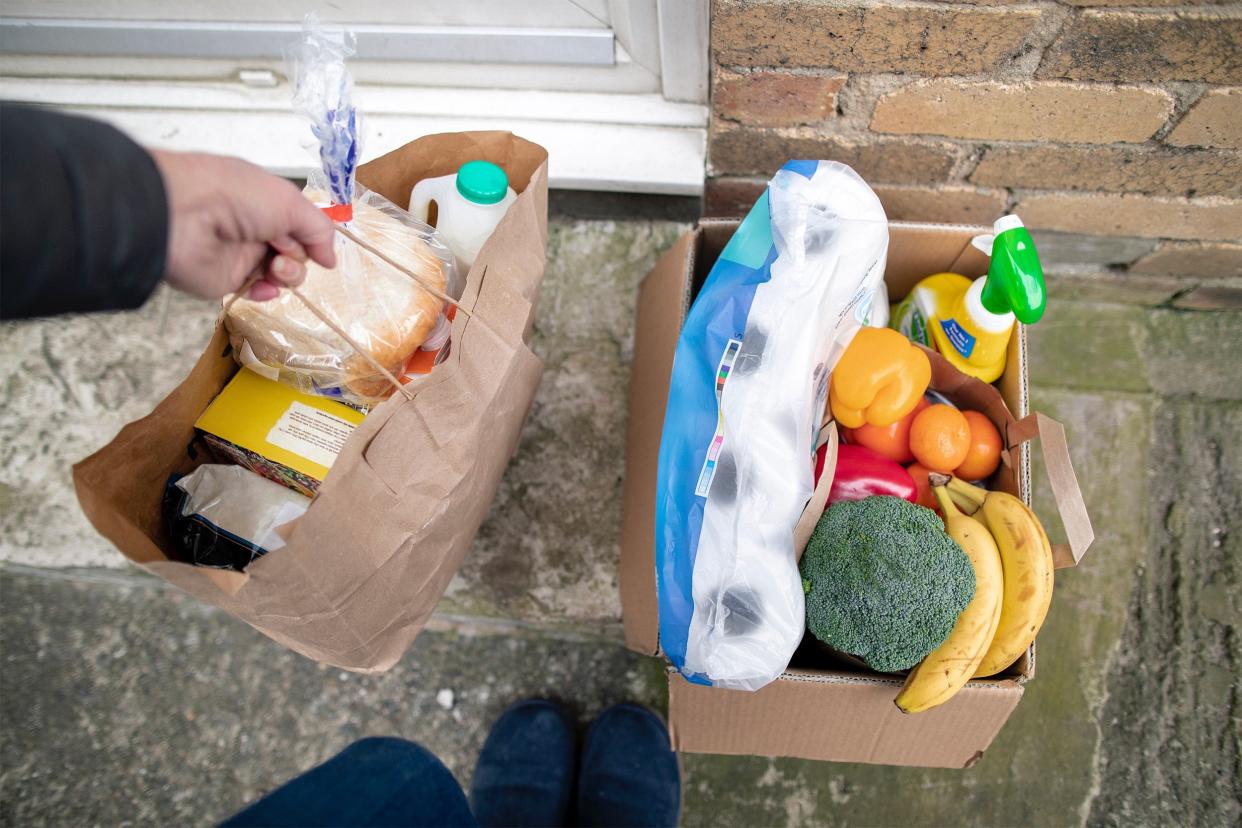
Food Storage Tips to Make Your Groceries Last
Frugal consumers are always looking for tips and tricks to help cut food costs and waste, and many of these come down to smart storage. Storing food properly allows budget-minded shoppers to buy items in bulk at a lower cost, for example. Keeping fresh produce in good condition for as long as possible is also a key to stretching food dollars and making fewer trips to the store. These 50 food storage tips are designed to help consumers spend less and enjoy more.
Editor's Note: This story was updated in April 2024.
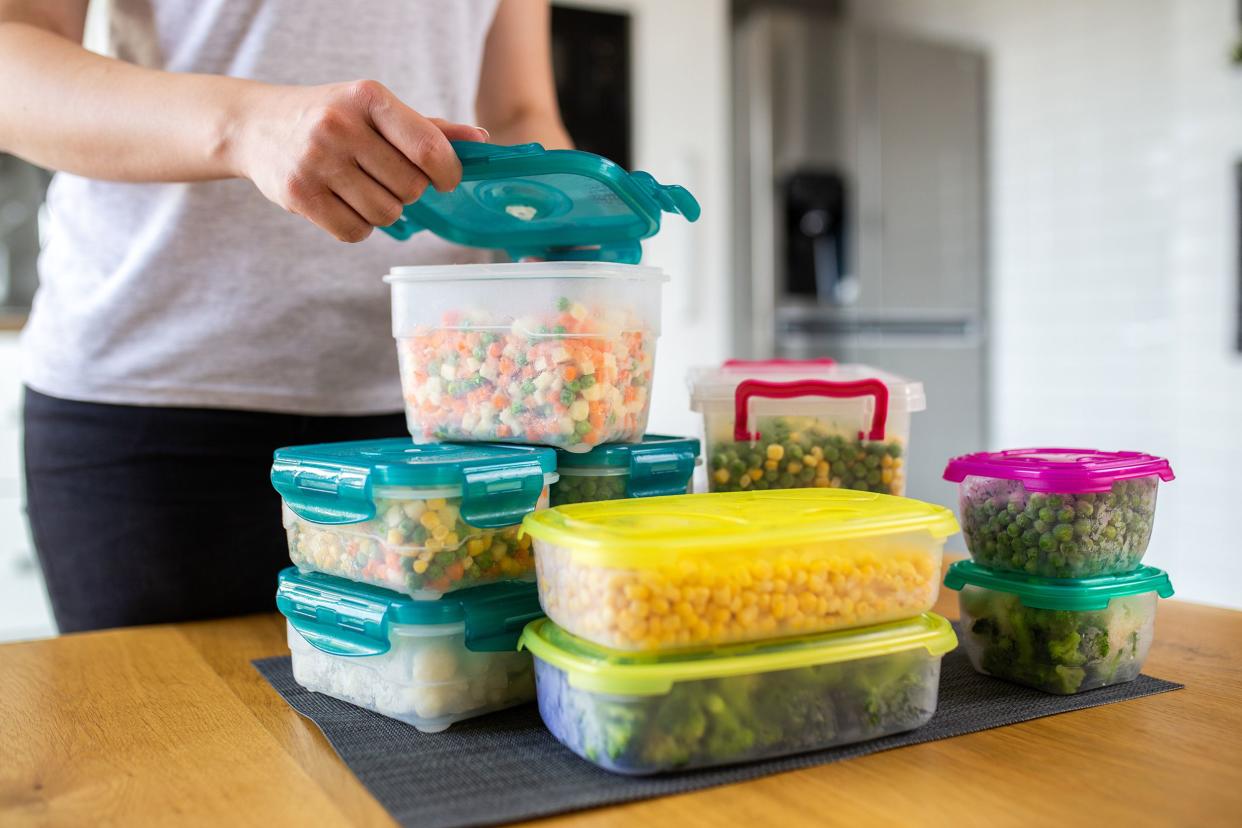
Use Reusable Containers
Many foods stay fresh longer when not stored in the original packaging. Keeping an assortment of sizes of food-grade plastic or glass containers (style and prices vary) provides an easy way to store all kinds of bulk food — from grains and flours to dehydrated meals and dried legumes, as well as spices and other powders.
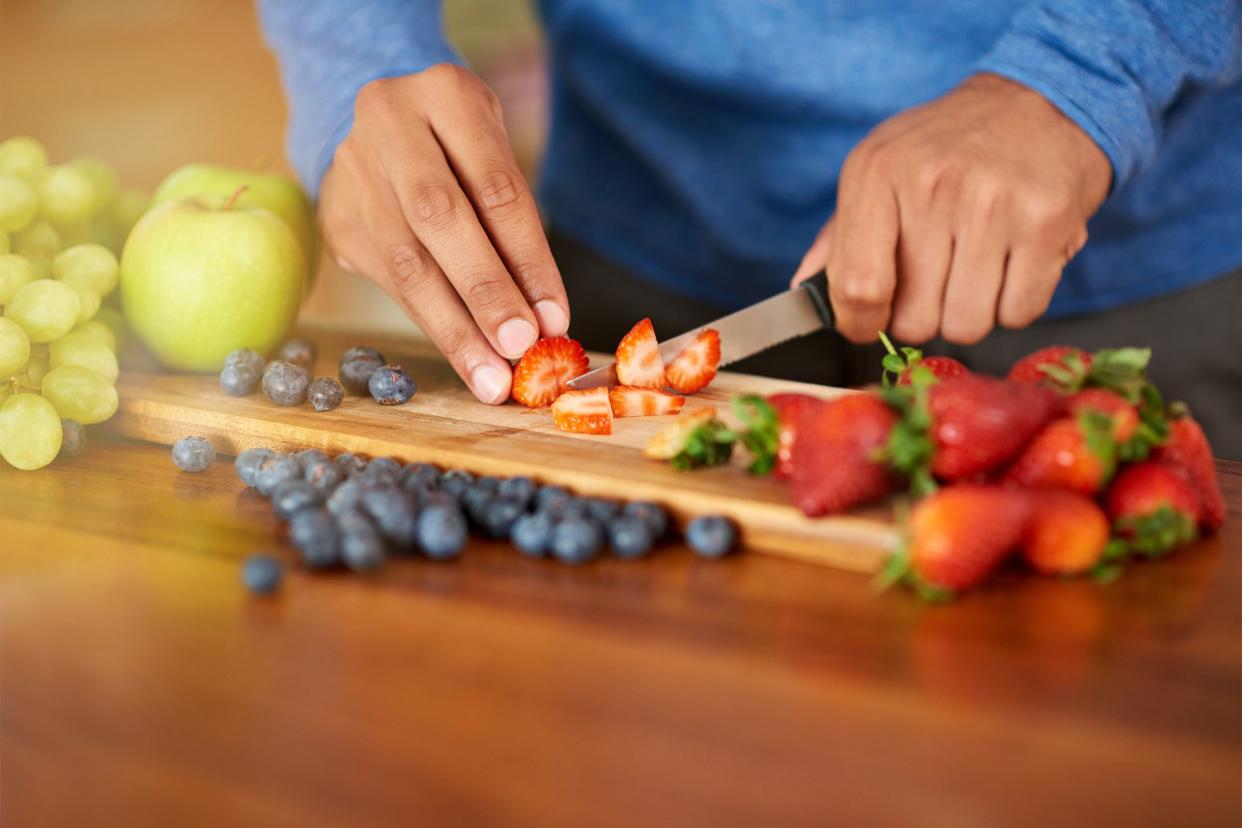
Freeze Seasonal Produce
Fresh produce is cheapest and has the most nutrition and flavor in season. Take time to freeze fruits and vegetables properly to save money during colder months when produce prices rise.
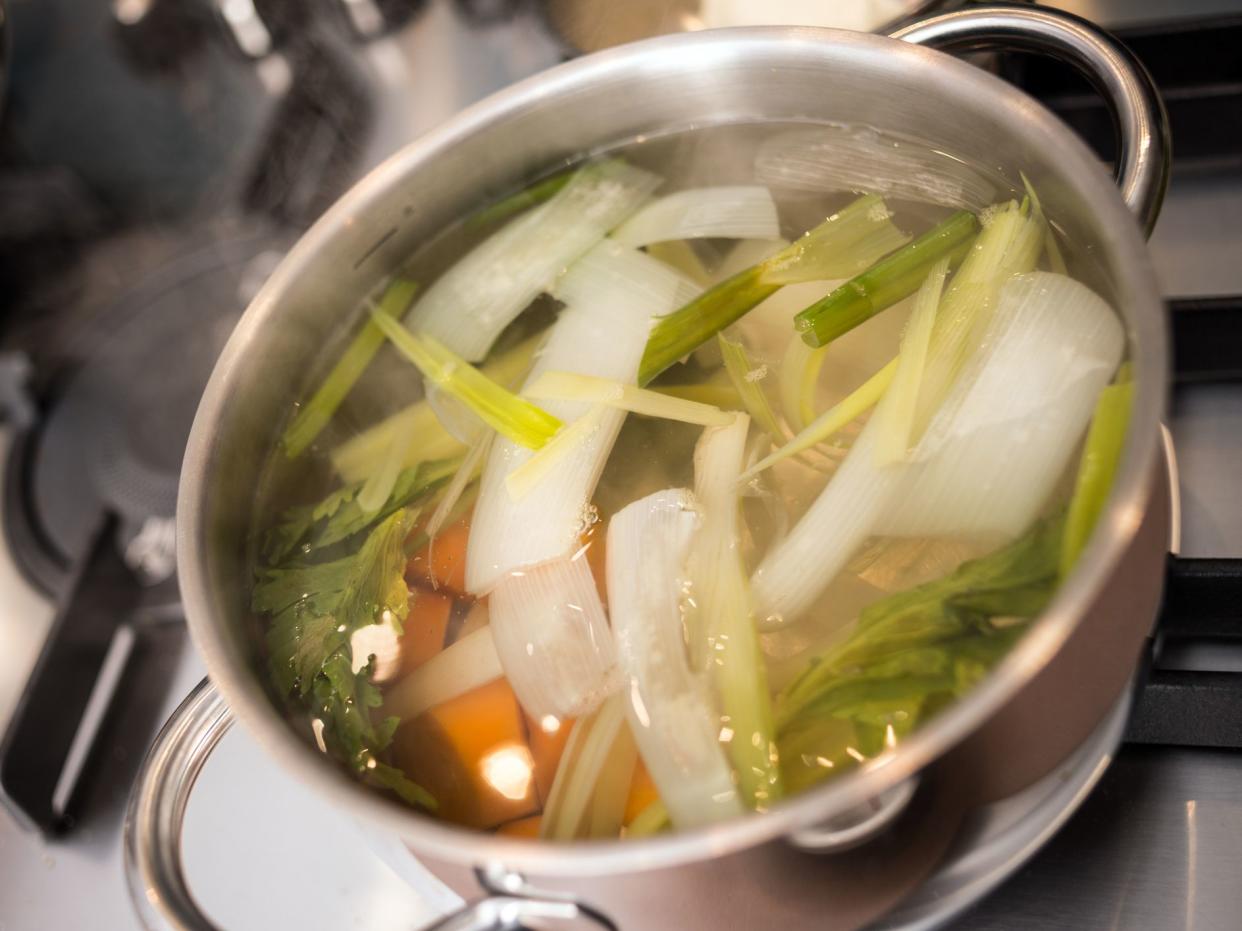
Freeze Food Scraps for Stock
Instead of throwing away the ends of onions, carrots, and celery, toss them in a freezer bag along with mushroom stems, stray garlic cloves, and herb stems. When the bag is full, use it to make a flavorful broth or stock from ingredients that otherwise would've wound up in the garbage.
Related: 10 Easy-to-Make Foods to Stop Buying at the Store
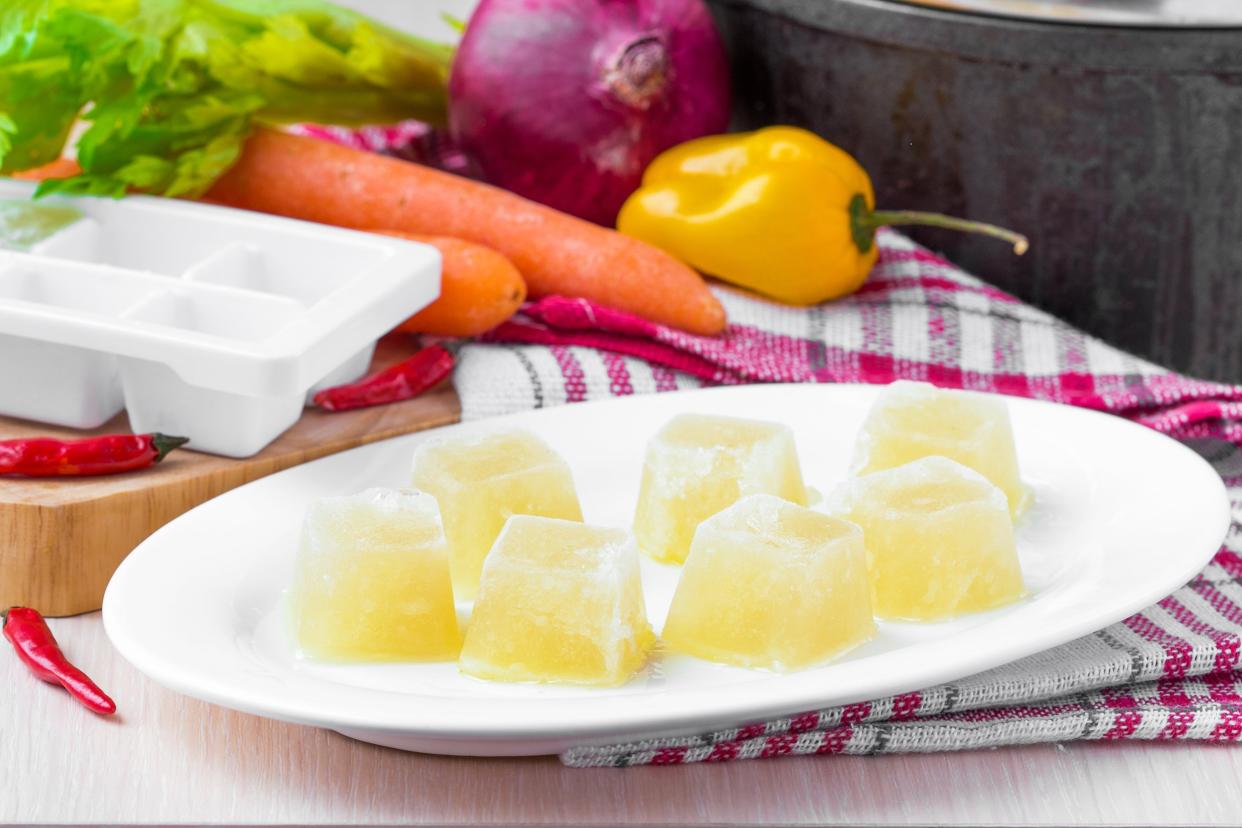
Freeze Homemade Stock in Cubes
Having access to small amounts of homemade stock and broth can be a real timesaver. If stored in one big container, it's difficult to add just a cup or a few tablespoons to a recipe. Instead, freeze stock in ice cube trays and store in plastic storage bags for easy use anytime, no matter how much or how little the recipe calls for.
Related: 10 Cheap and Easy Soup Recipes
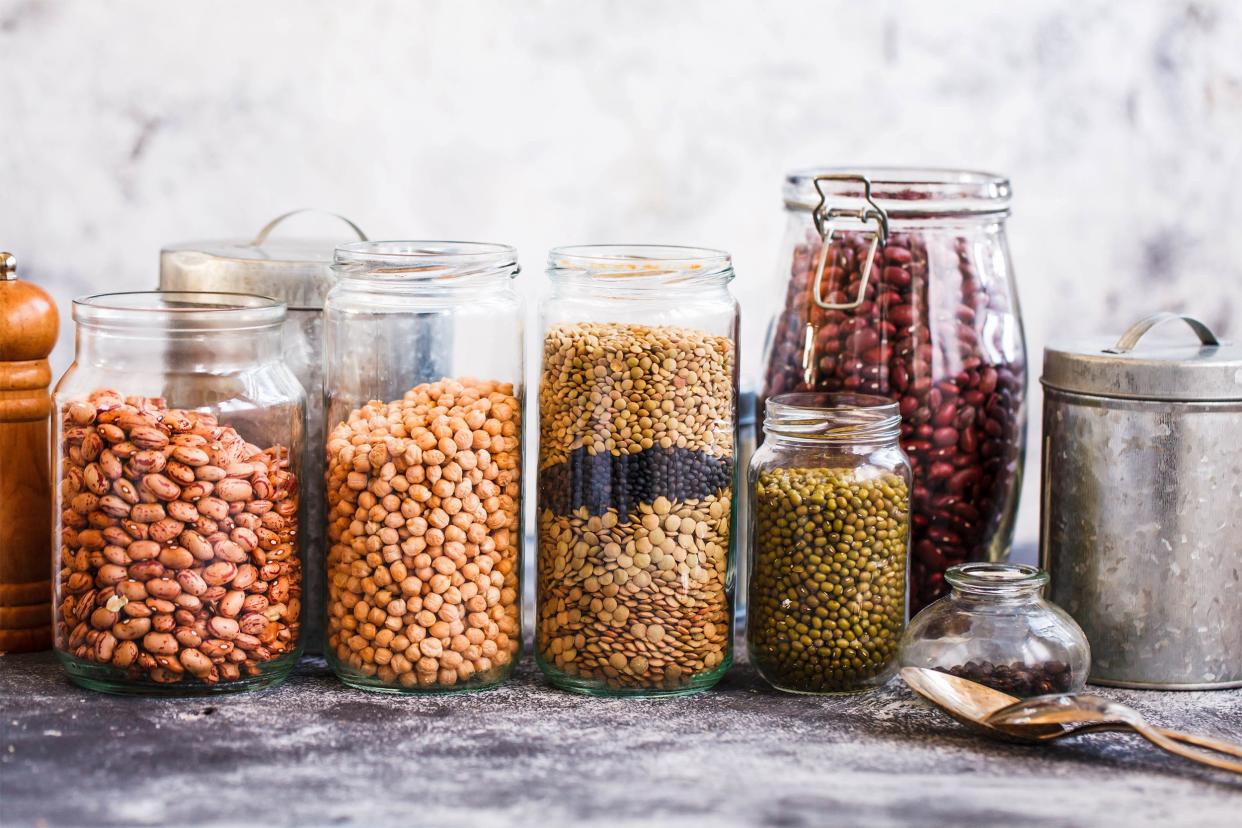
Buy Dry Beans
Dried beans are cheaper by volume, easier to stack in large amounts, and more shelf stable than canned beans. Buying this nutritious and versatile staple in bulk also reduces the cost to pennies per serving.
Related: 12 Tasty Bean Recipes
For more great money-saving kitchen tips, please sign up for our free newsletters.
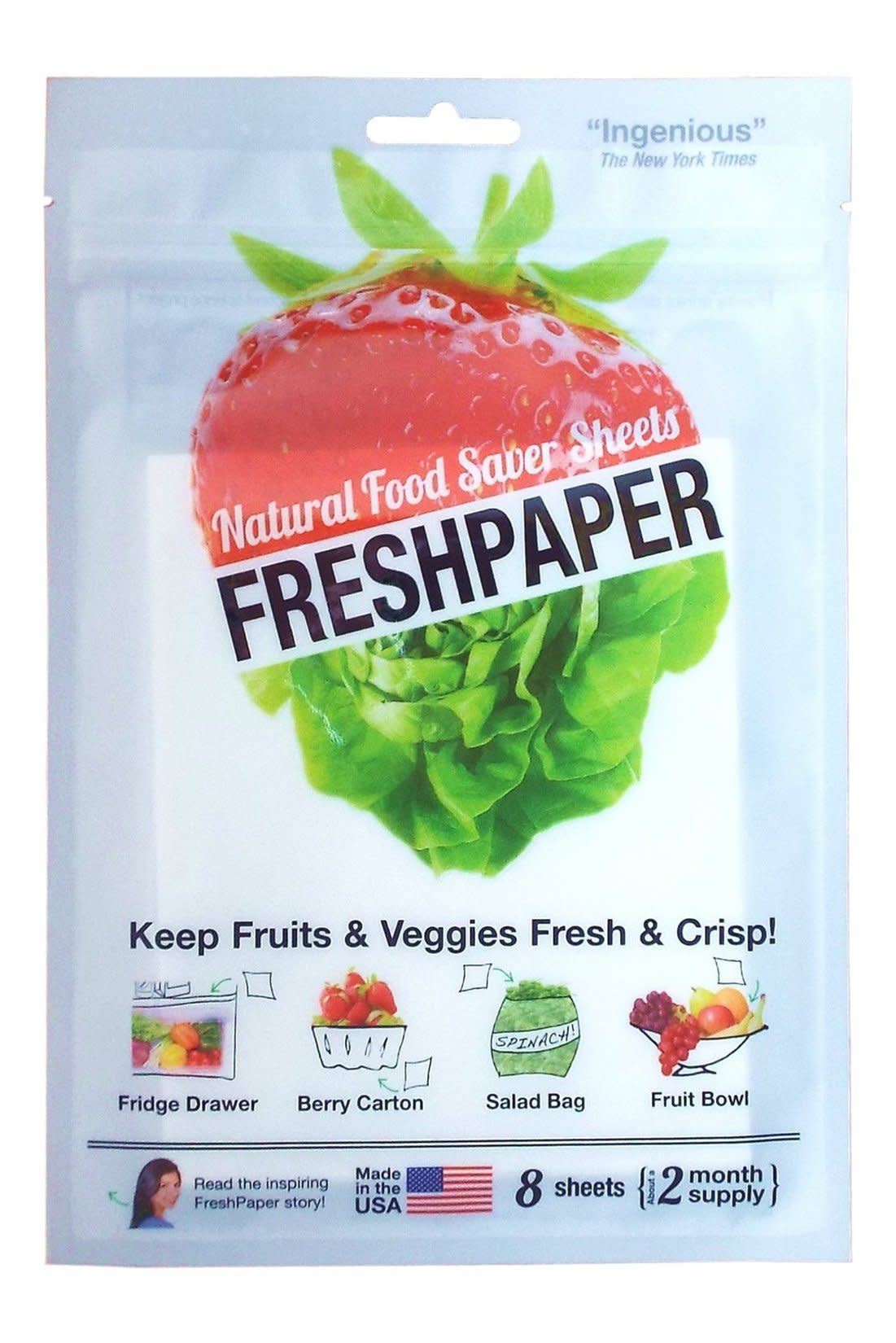
Try Produce-Preserving Sheets
Sheets sold under the label Fenugreen FreshPaper are designed to line produce drawers in the fridge and help keep fruits and vegetables fresh up to four times longer. Many consumers reviewing the product confirm that the sheets help extend the life of produce, reducing waste significantly. Shoppers must decide if that's worth a price of $9 for eight sheets.
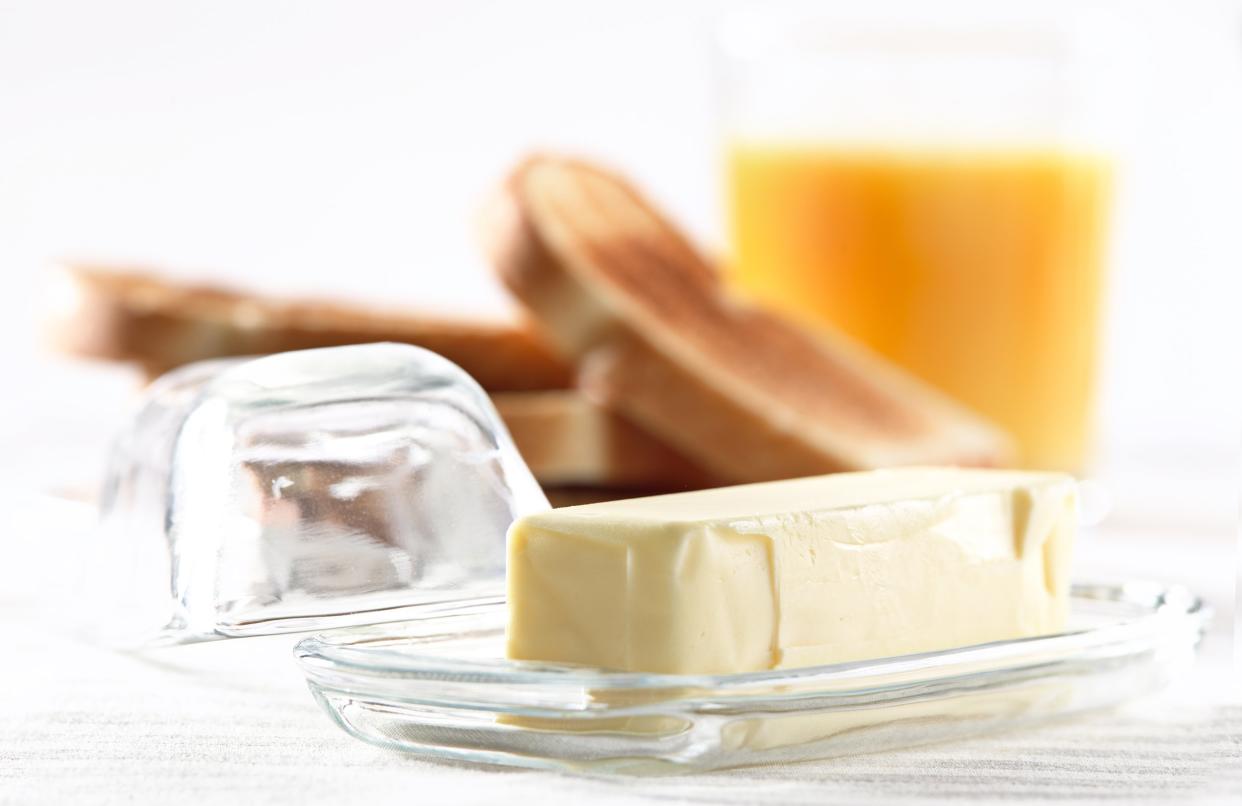
Store Butter on the Counter
Although most Americans store butter in the fridge, keeping butter on the counter is typical in many parts of the world. Room-temperature butter is easier to spread on toast, meaning less could be used overall, saving more. Just be sure to use within a few days and keep stored properly — for instance, in a French butter bell.

Look to the Basement
Basements tend to be one of the most temperature-stable spaces in the house, because they lie mostly underground. Use a dark and cool corner of the basement to store root vegetables bought on sale. Store produce in mesh bags to allow air circulate and reduce the risk of unwanted pests.
Related: Food Expiration Dates and Food Freshness Labels Explained
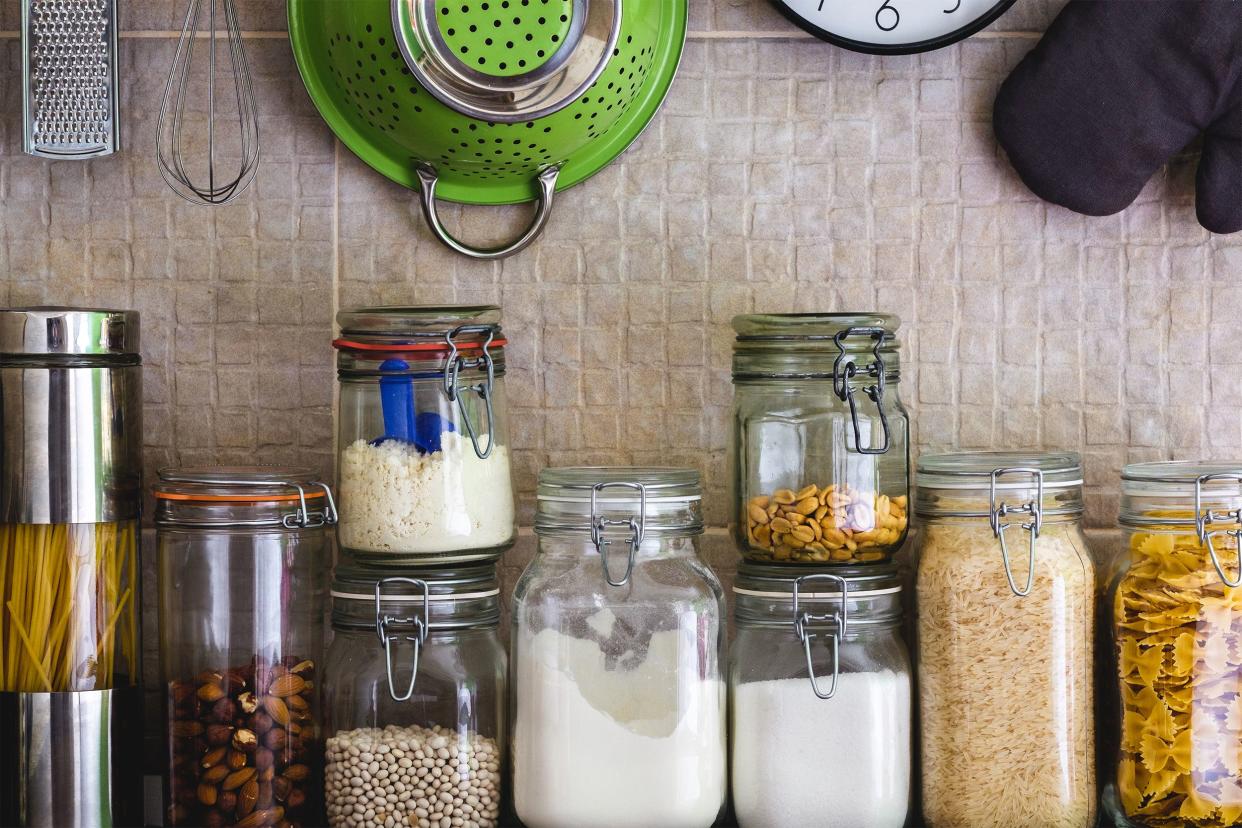
Store Open Packages in Containers
Use food storage bags or other containers to stay organized; avoid spills and waste from open bags of staples, such as flour, sugar, and tea; and keep bugs out of food.
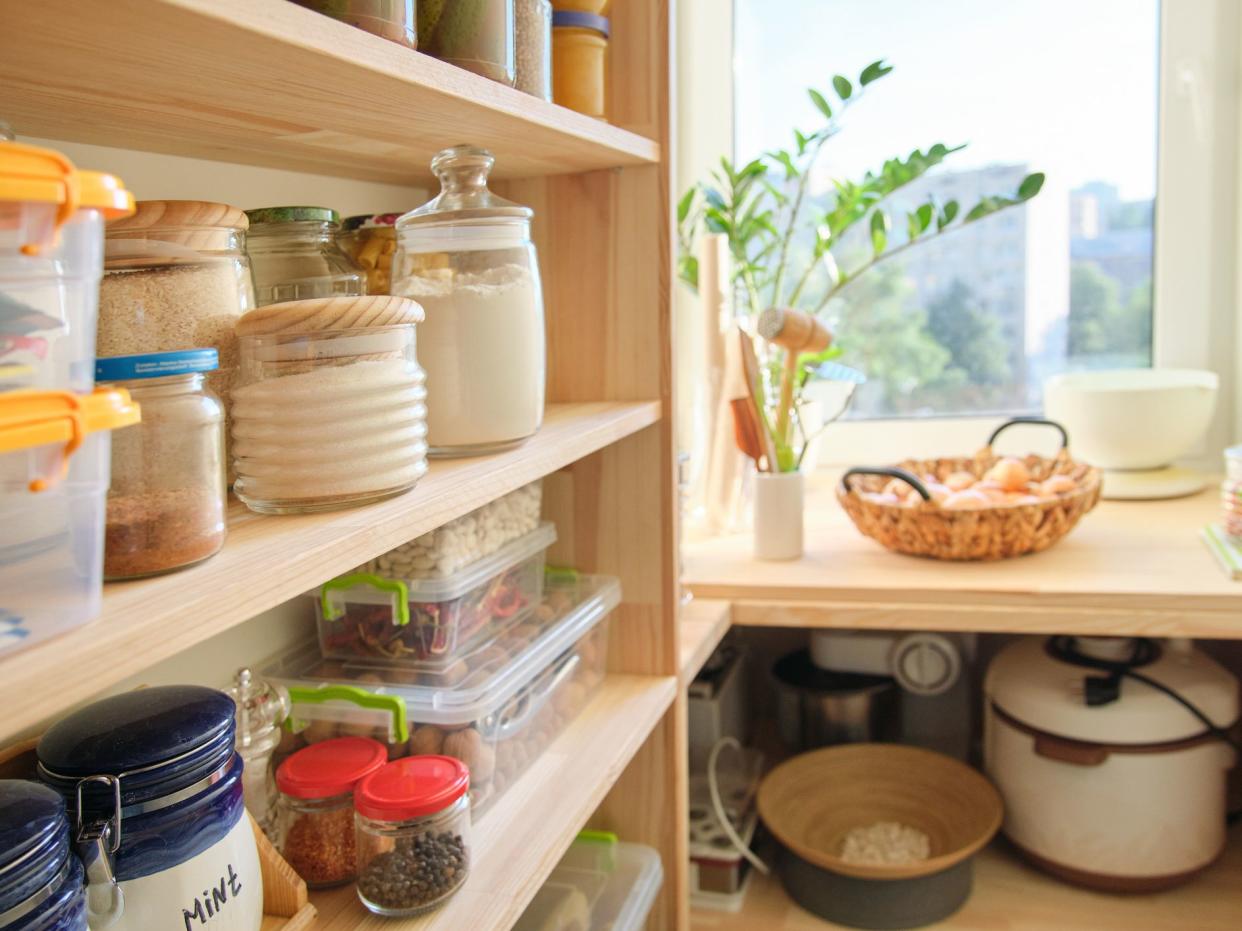
Organize Cupboards and Pantry
If you can't find an ingredient, you are likely spend money on something you already have. Keep like items together and store things with a common purpose together. For example, keep tea and honey in the same cupboard, and keep baking ingredients together in the pantry.

Reuse Empty Jars
Storing food in jars has a lot of benefits that translate into savings. Use old jars that once contained sauce, pickles, jam, or other foods. Most are clear, which allows the contents to be seen clearly, and they protect food without fear of leaching harmful chemicals.
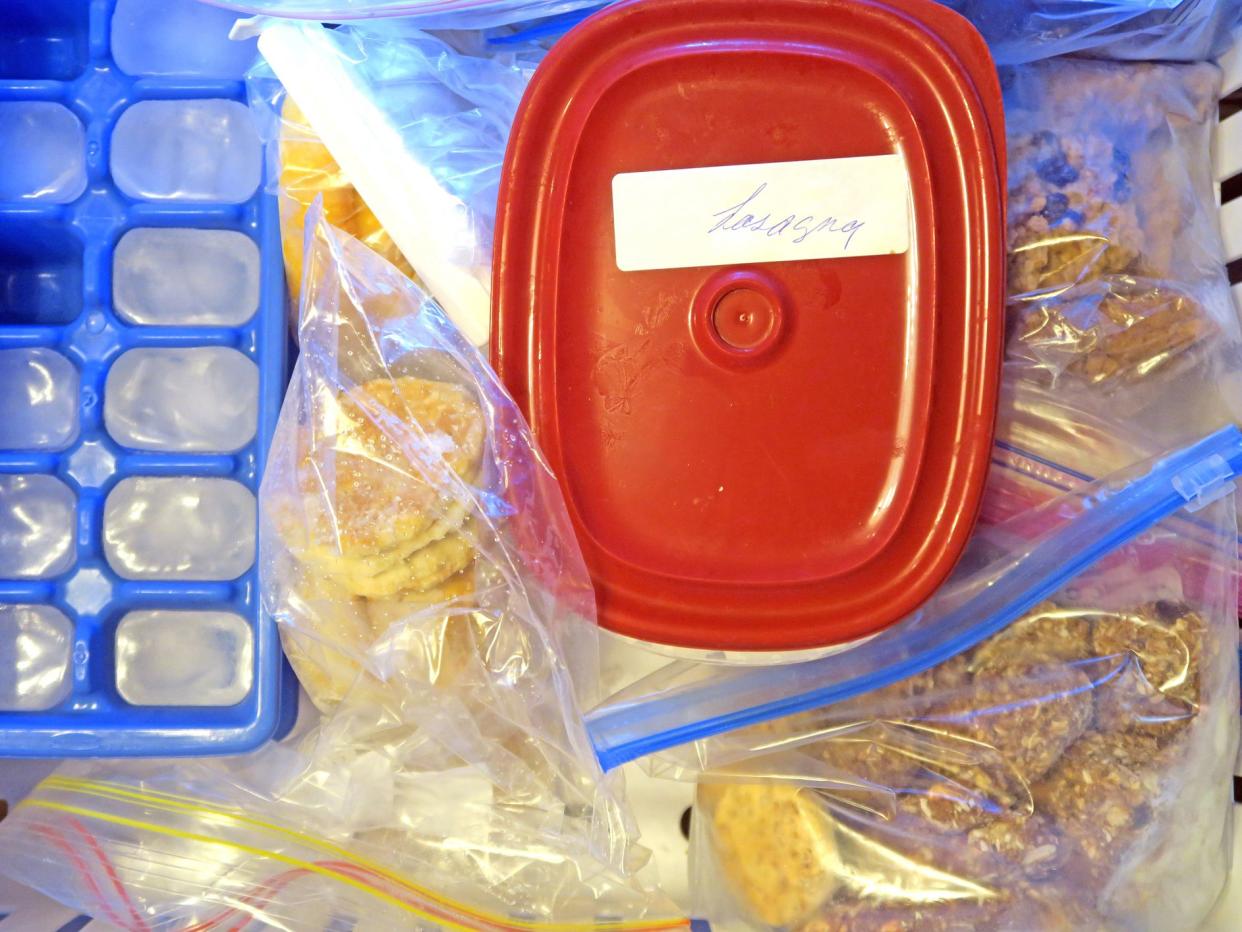
Freeze Leftovers for Future Meals
It may be tempting to throw the one remaining portion of casserole in the garbage after eating it for a few meals in a row, but that's money in the trash. Freeze leftovers for later, when that same meal that seems boring now will make a tasty lunch.
Related: 15 Foods That Are Always Better As Leftovers
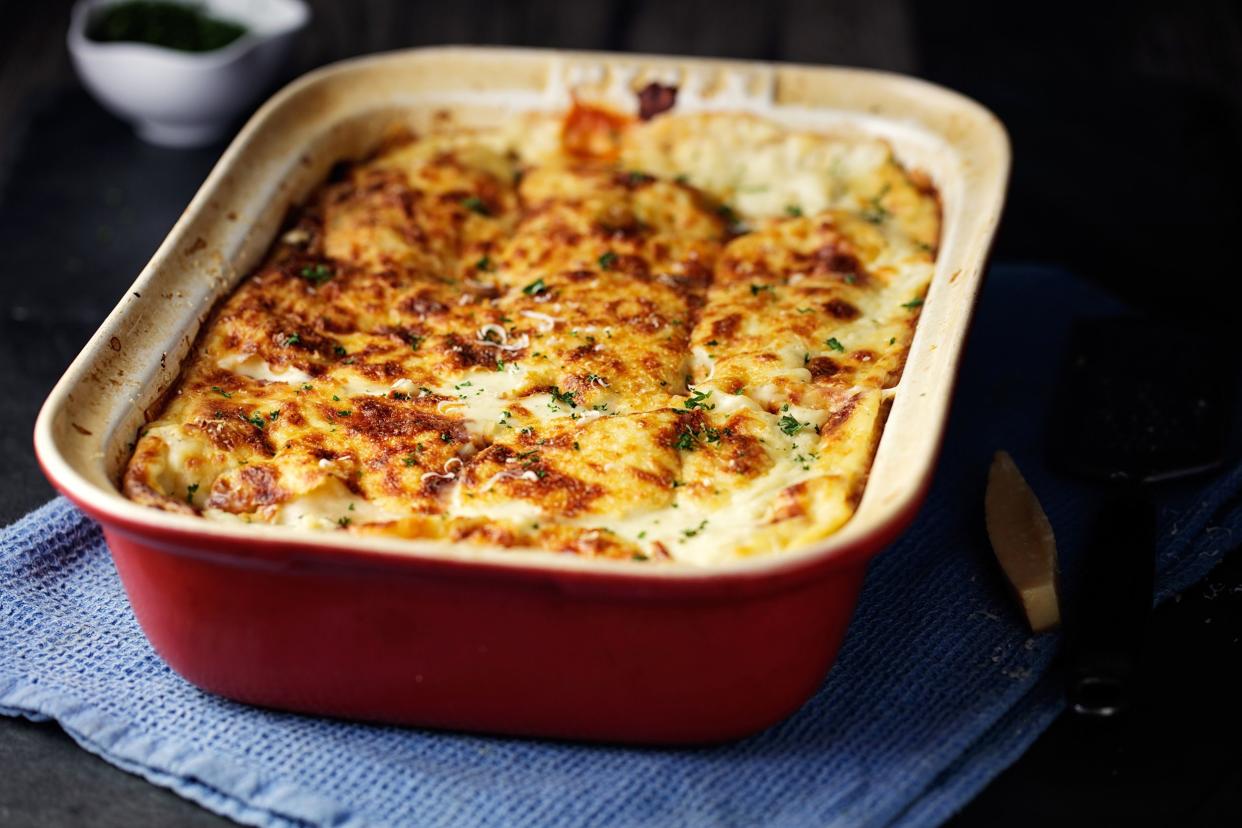
Freeze Pre-Made Meals
Busy schedules often make the temptation of takeout or delivery too convenient to avoid. You can be one step ahead by making premade meals such as lasagna, chicken casserole, or rice and beans that just need a quick reheat in the oven. These convenient meals are much cheaper than prepared meals or dinner out.
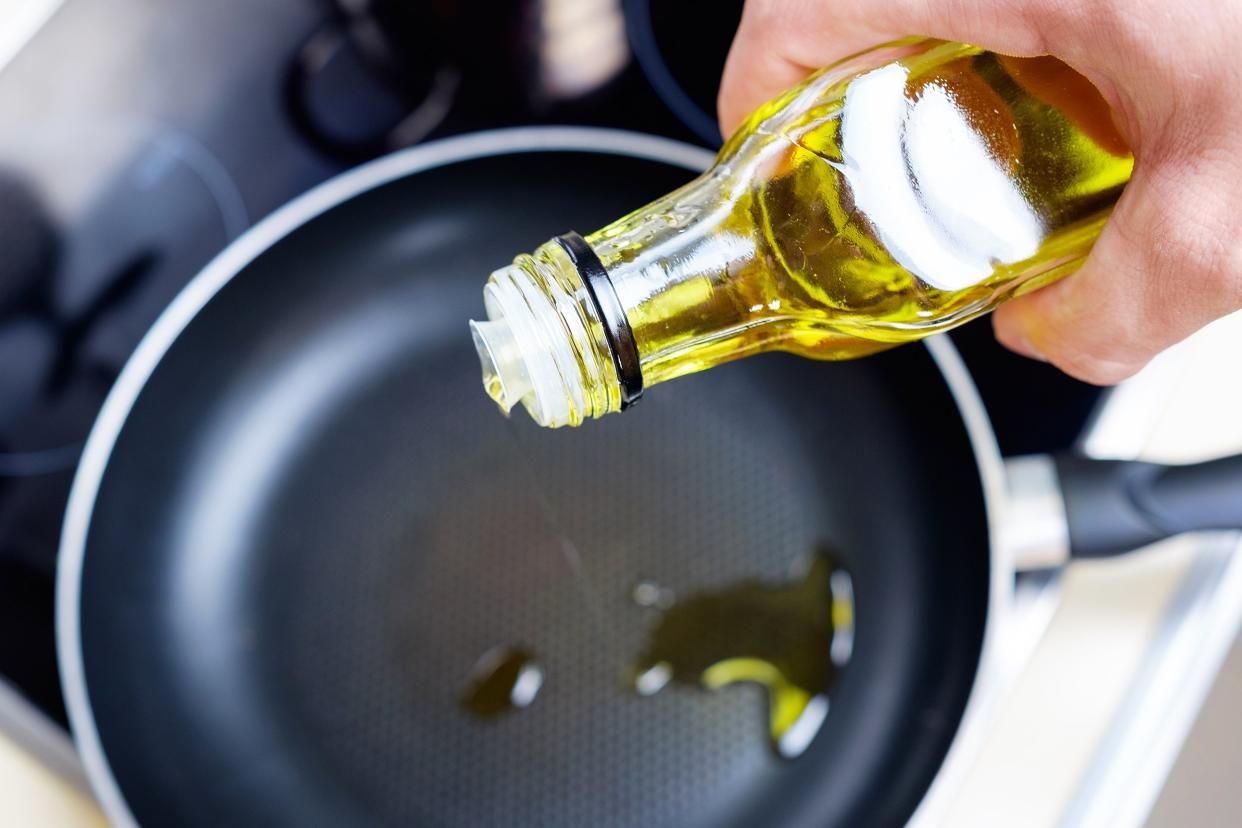
Keep Oil in Small Jars
Rather than keeping cooking oil in the large container it's sold in, keep a small bottle for each type that can be refilled. Store the larger bottles of oil in a cool, dark place away from the kitchen's heat to help extend shelf life.
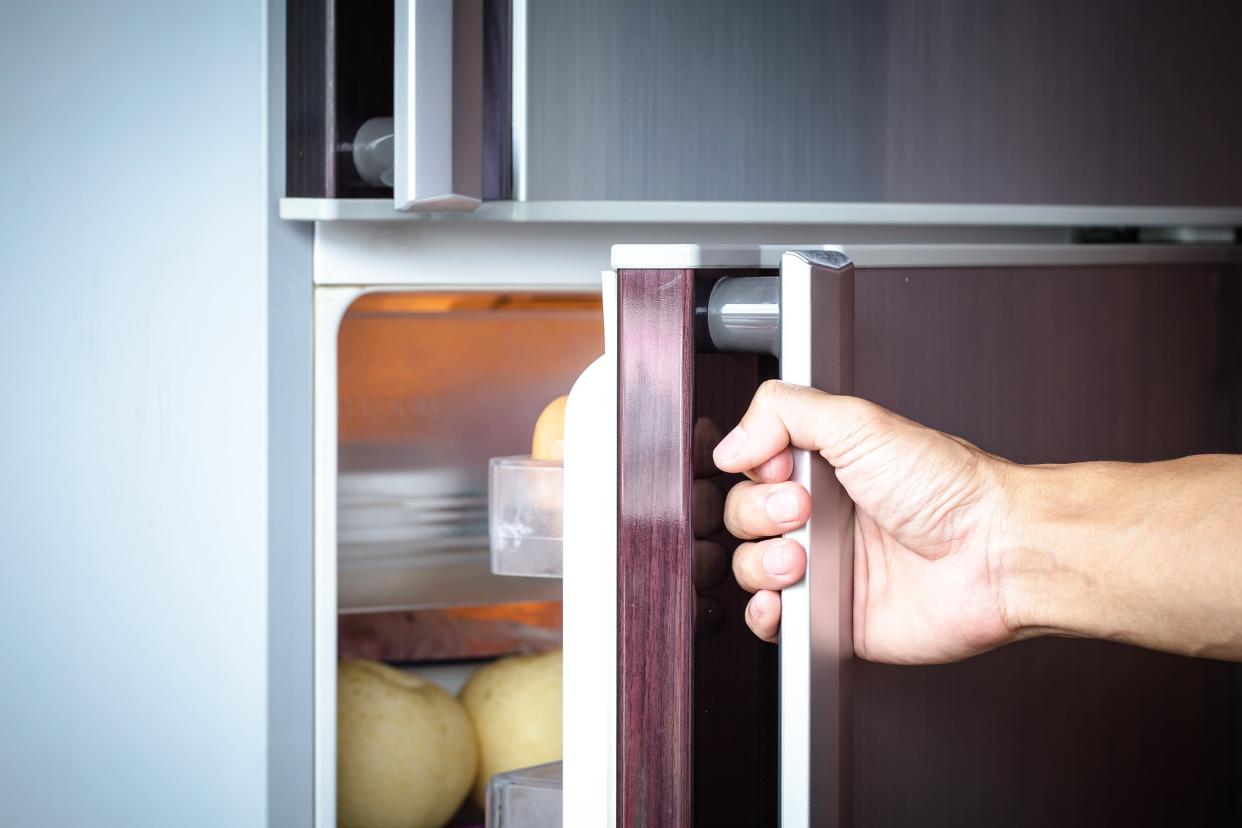
Store Whole Wheat Flour in the Fridge
Whole wheat flour contains wheat germ, which spoils easily in warm temperatures. Keep it fresh and prevent it from going rancid by storing it in the fridge.
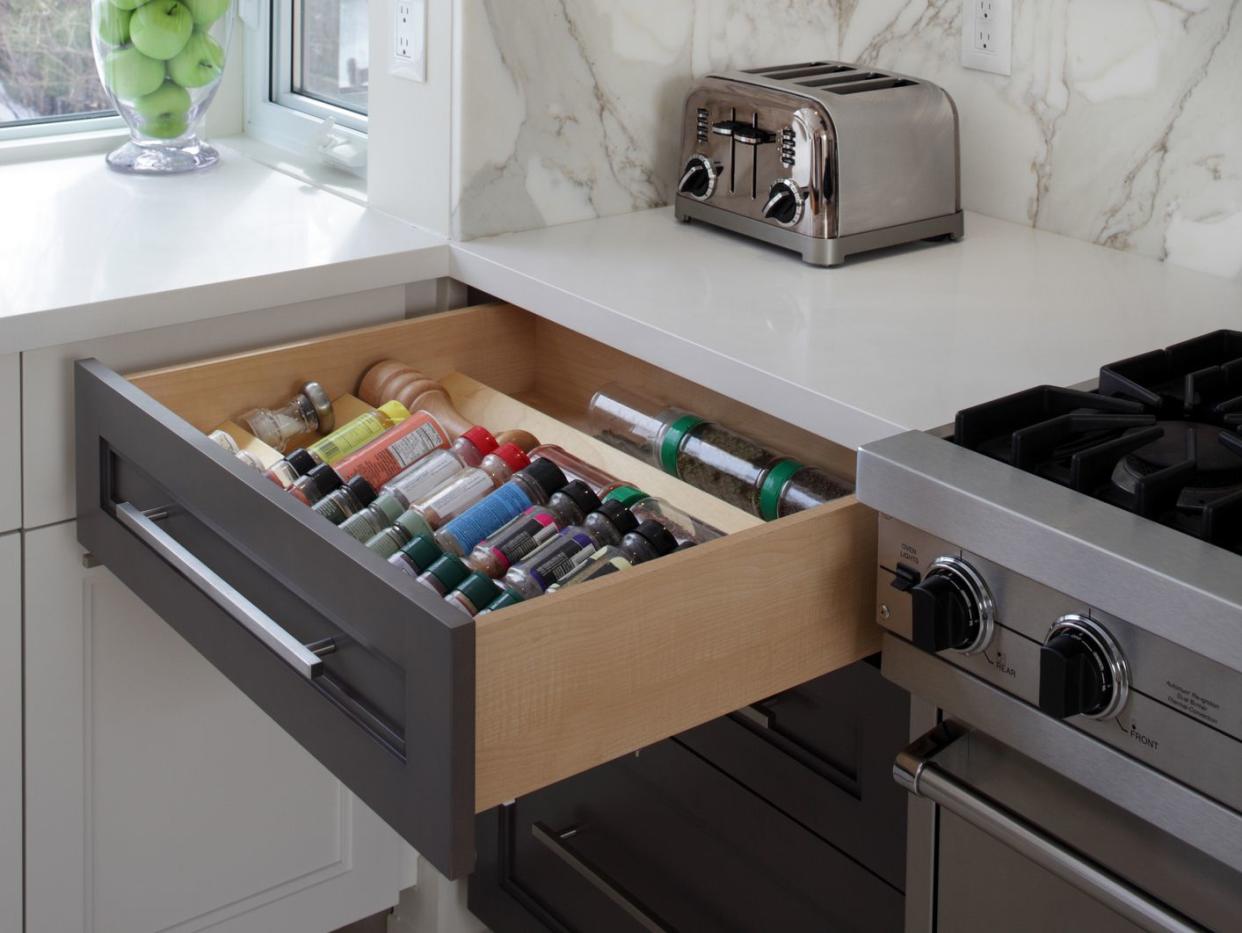
Keep Spices Away From Sunlight and Heat
Heat and sunlight damage spices, causing them to lose flavor and pick up stale flavors. If a spice rack is used, keep it away from the heat of the stove and out of natural light. Even a refrigerator is a better alternative to a hot, sunny countertop.

Store Greens With Paper Towels
Greens are difficult to store for longer than a few days, and once they start to go bad it can be challenging to pick out spoiled leaves from the rest. Storing greens with paper towels helps maintain a healthy level of moisture, keeping them crisp and unwithered.
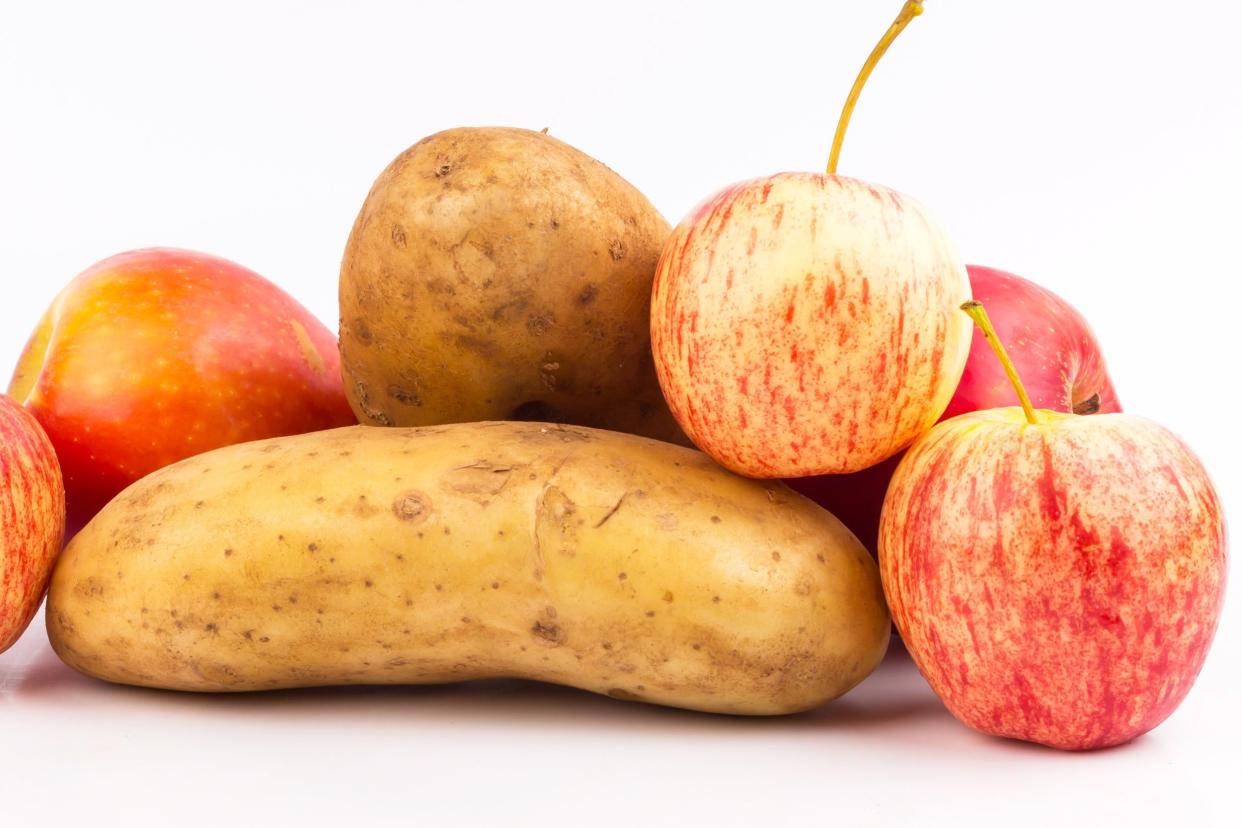
Store Potatoes With an Apple
Apples give off a chemical that helps potatoes stay fresh and keeps them from sprouting. Store potatoes with an apple to help them stay in good condition for up to twice as long.
Related: Celebrate Spuds With 27 Tasty Ways to Cook Potatoes
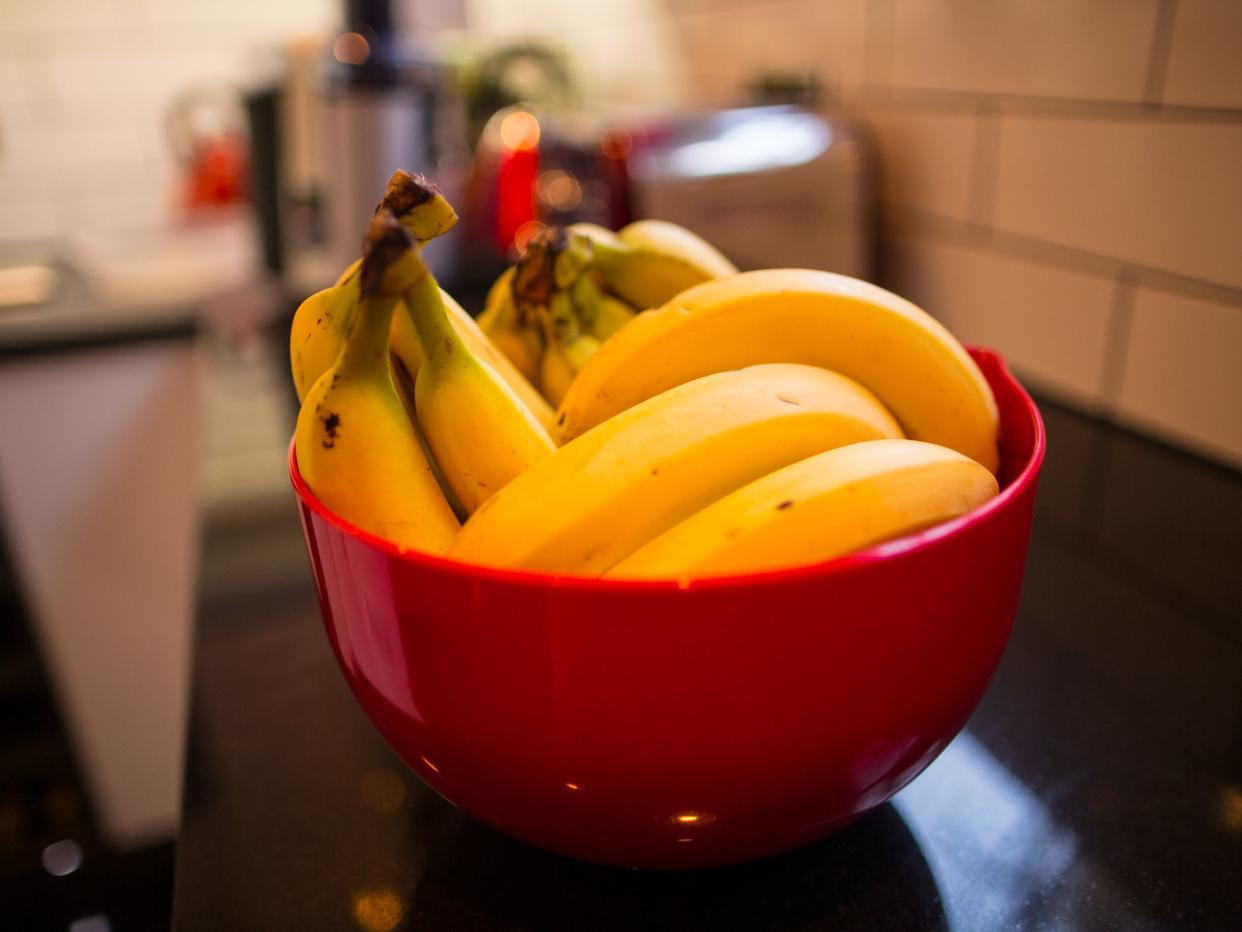
Keep Bananas Separate
The gas that bananas give off as they ripen encourages other fruit nearby to ripen more quickly. Storing bananas away from other produce will help keep them from ripening and spoiling too fast.
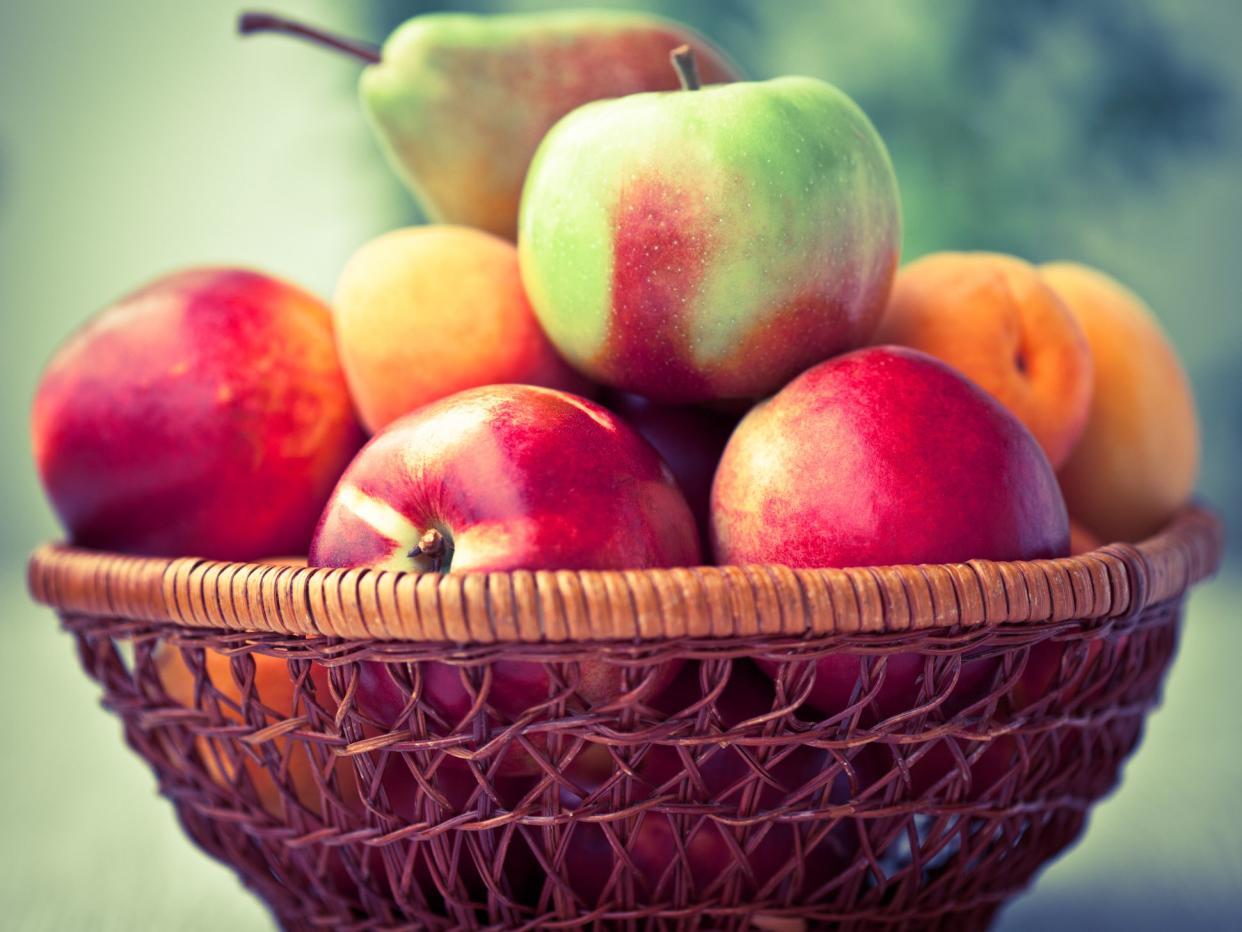
Know Which Fruits to Refrigerate or Store on the Counter
Certain fruits keep better in the fridge, while others do better at room temperature, and storing them properly reduces waste. Citrus, tomatoes, and avocados, for example, are better left unrefrigerated, but cucumbers, peppers, and carrots are better stored in the fridge. Certain foods such as apples and pears can handle either.
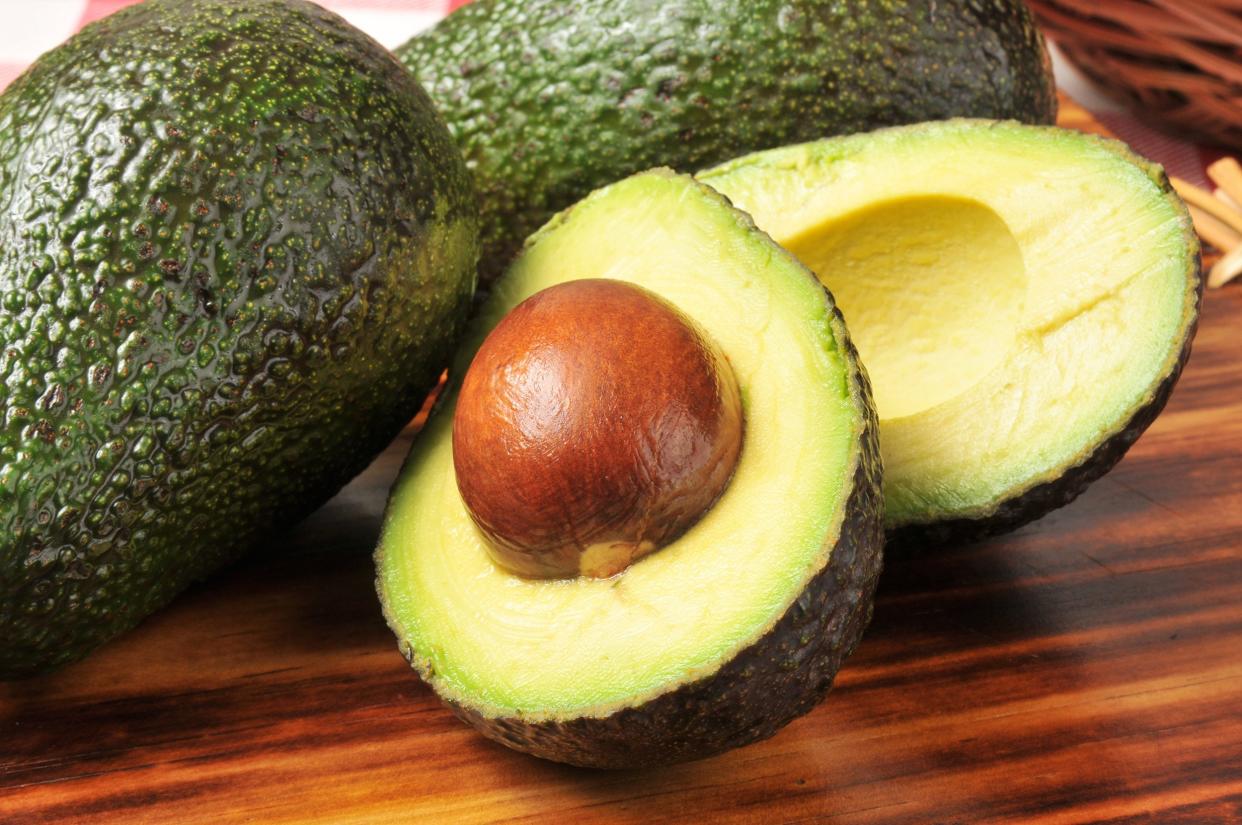
Don’t Toss That Avocado Pit
Once an avocado is sliced apart it oxidizes and turns brown quickly, making it less appetizing. Keeping the pit in the piece of avocado to be saved slow the process and keeps it fresher longer. Stash the pit in a large batch of guacamole to help it stay green and fresh looking.
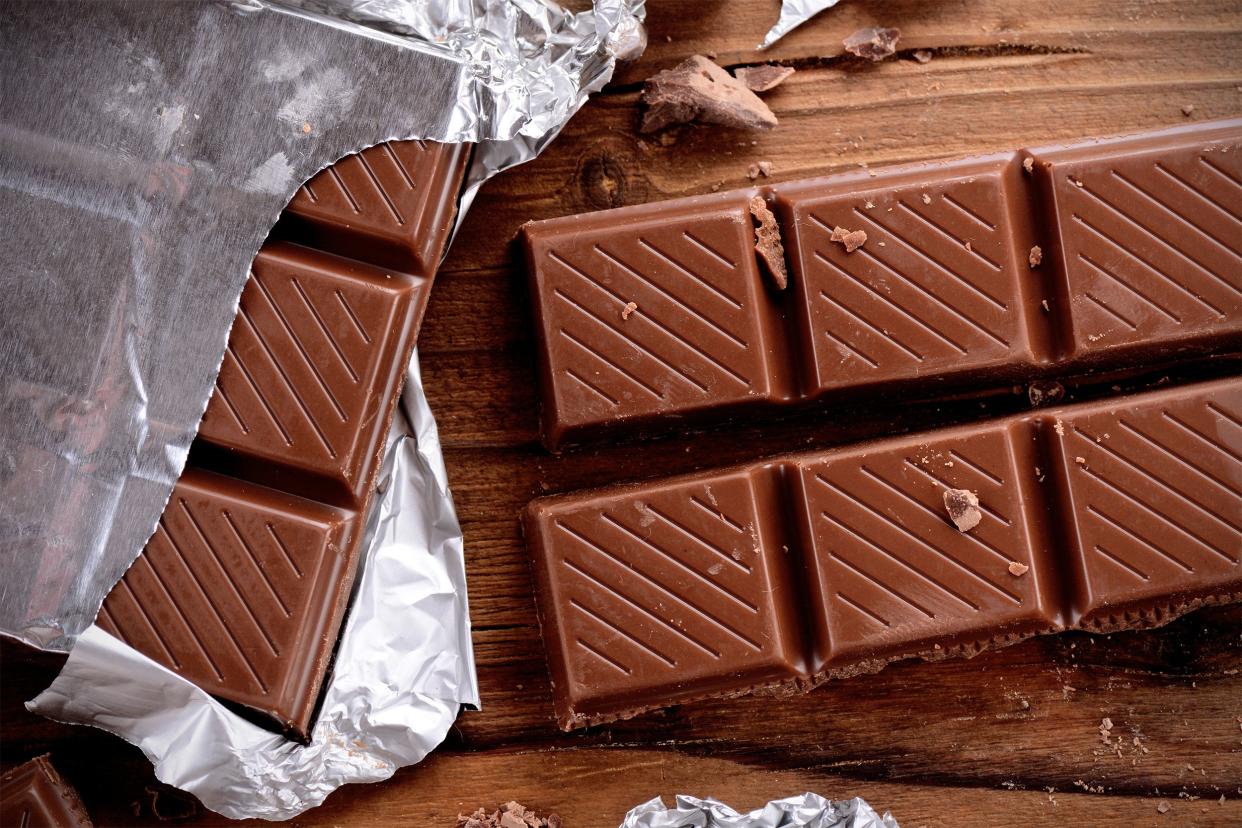
Keep Chocolate Chilled
Most chocolate has a high-fat content, which tends to spoil quickly and pick up other unwanted flavors. Keeping chocolate in the fridge properly wrapped will keep it fresh for months at a time, extending the life and preserving the flavor of this sometimes costly ingredient.
Related: We Tried 13 Kinds of Chocolate and These Are the Best
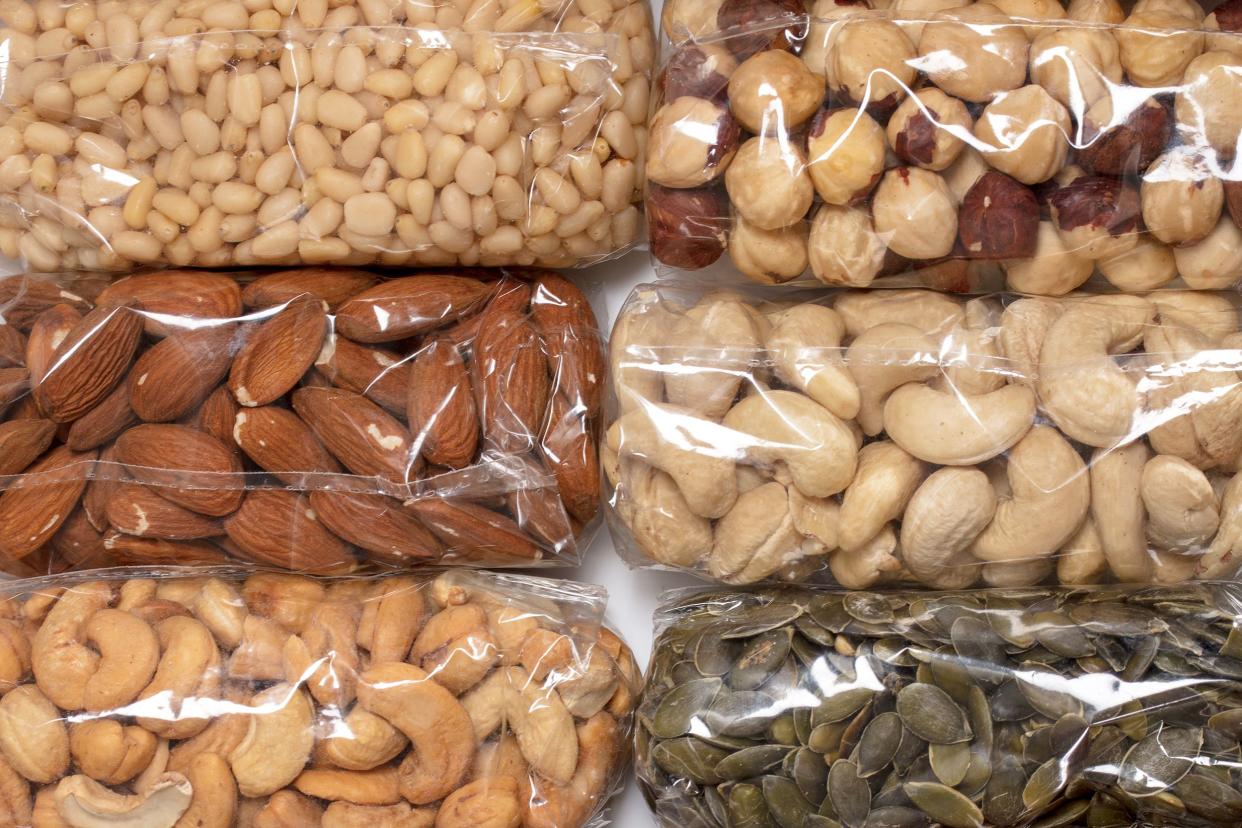
Store Nuts in the Freezer
Nuts have a naturally high fat content and can spoil within a few days if exposed to heat and sunlight. Rancid nuts are destined for the garbage, which is a shame, especially since they can be a pricey item. Storing all kinds of nuts in the freezer allows for the purchase of larger packages at a discount and keeps them in good condition for up to a few months.
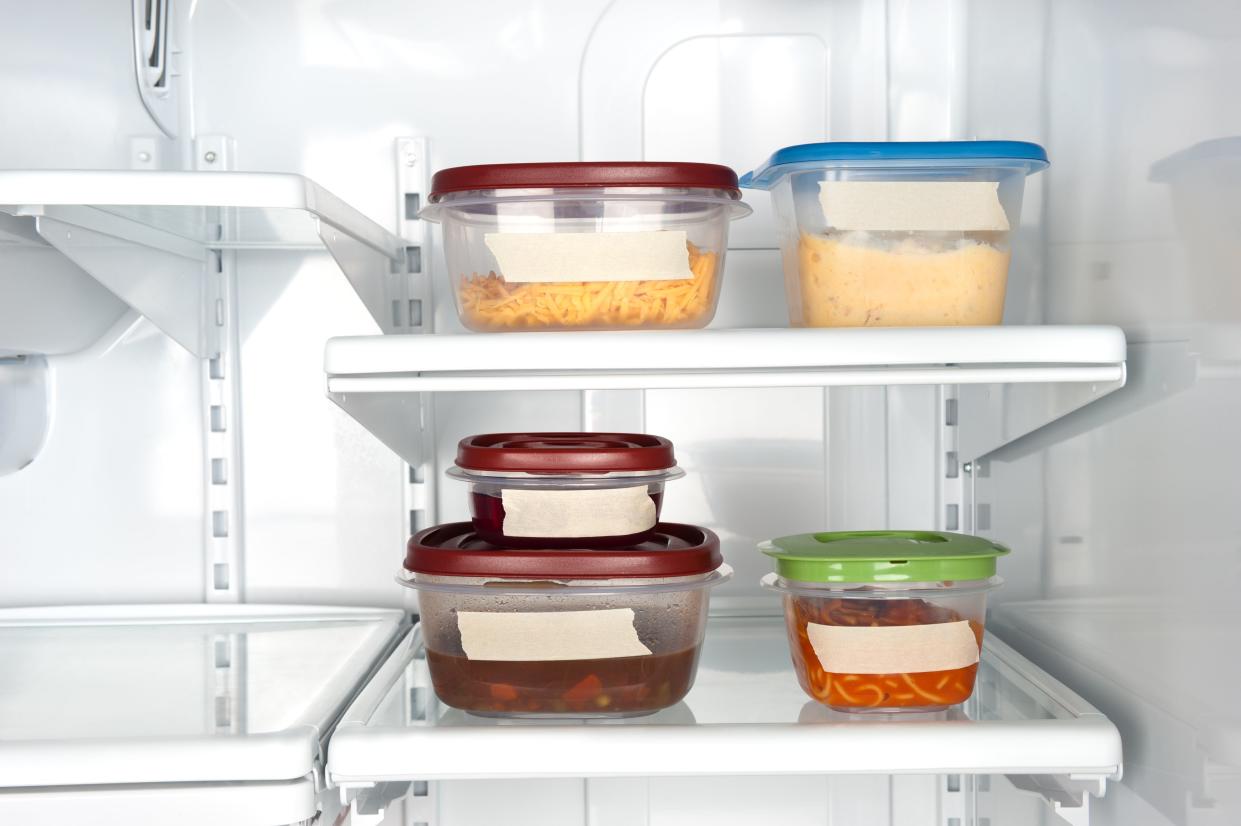
Be Sure to Label Containers Properly
Labeling containers is essential to staying organized and finding stored food efficiently. Arrange food storage containers so the label can be seen at a glance to avoid digging through shelves or boxes.

Invest in Canning Supplies
Storing homemade condiments and preserves using quality canning equipment (such as a starter set from Prepworks for $24 on Amazon) isn't just cost-effective; it also ensures your favorite sauces, jams, pickles, and more are always on hand for meals — or last-minute gifts.
Related: 16 Jam Recipes to Preserve Fresh Fruit Flavor
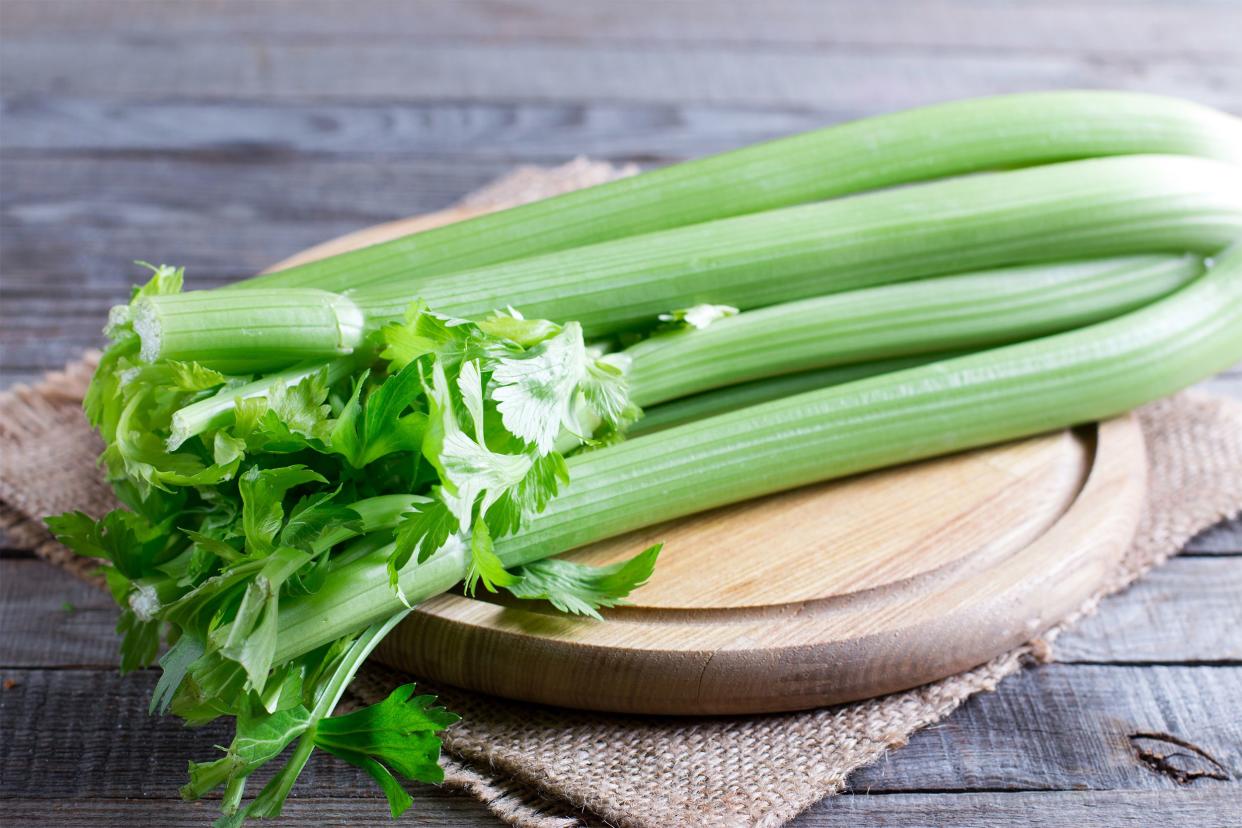
Keep Celery Crisp With Aluminum Foil
Soggy celery can be used to make stock and broth and doesn't need to be thrown out. But if it's for snacking, crunch matters. Keep celery stalks crisp by wrapping them in aluminum foil before stashing in the fridge.

Buy a Breadbox
Breadboxes have largely gone the way of rotary telephones, leaving many households to store bread in the fridge. But that's no place for bread; the cold temperature causes loaves to go stale faster. The best place to keep bread is in a cool dark place, such as a breadbox (from about $40 on Amazon, or even the microwave (when not in use, of course).
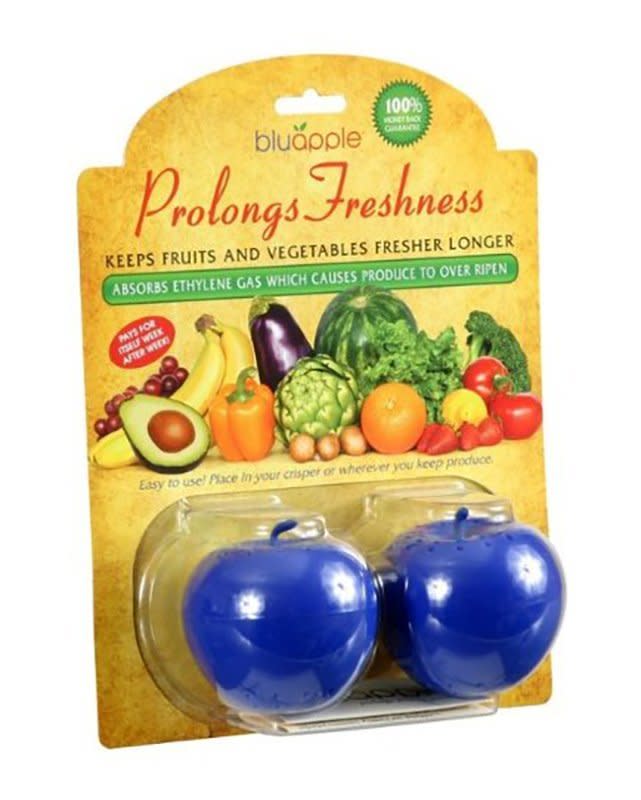
Use an Ethylene Gas Absorber
Products like Bluapple ($14 for two on Amazon) are designed to be stored in the crisper drawer to help keep fruits and veggies fresh longer. The apple-shaped device absorbs ethylene gas given off by produce, which slows the ripening process.
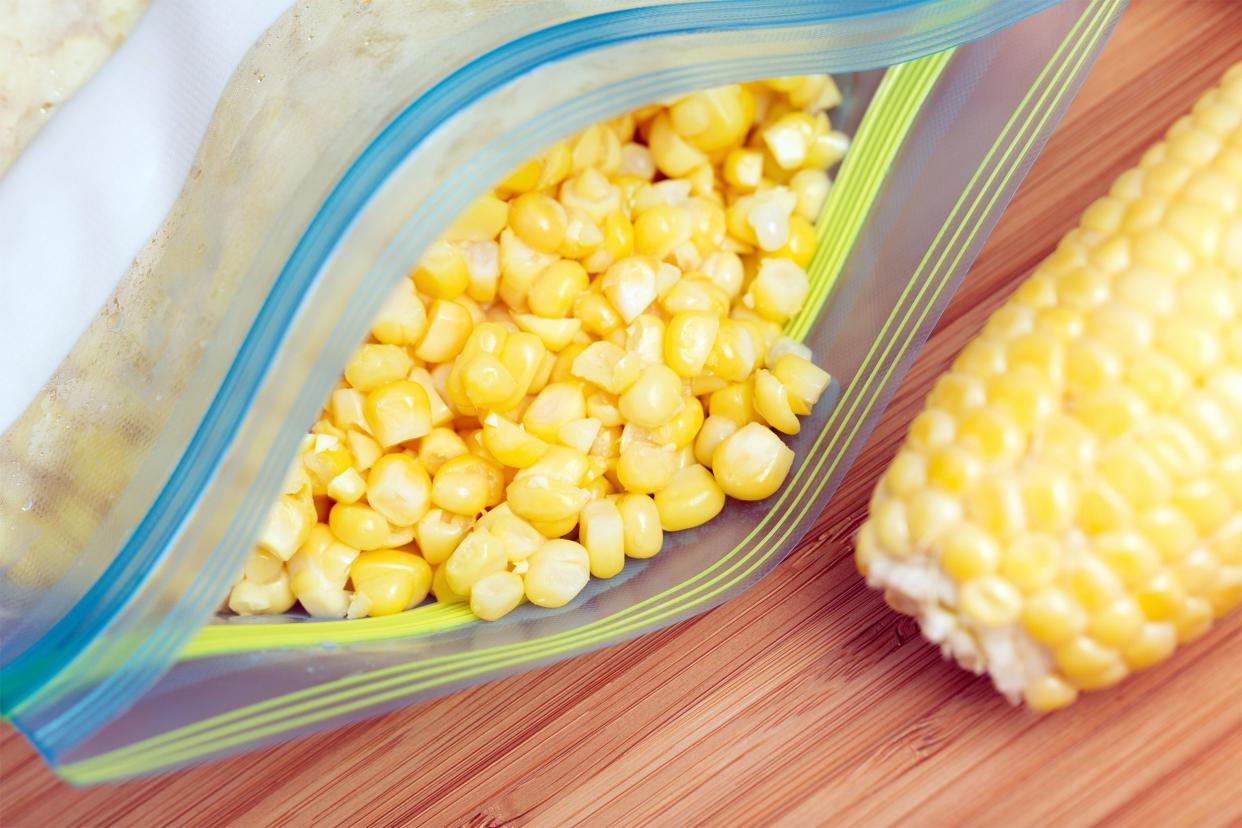
Keep Freezer Bags Handy
Having freezer bags on hand makes it easy to preserve an unexpected peck of fresh produce or leftovers from a generous meal. Nearly all foods — from soup to nuts — can be frozen easily using freezer bags, which are slightly thicker than regular plastic storage bags to help prevent freezer burn.
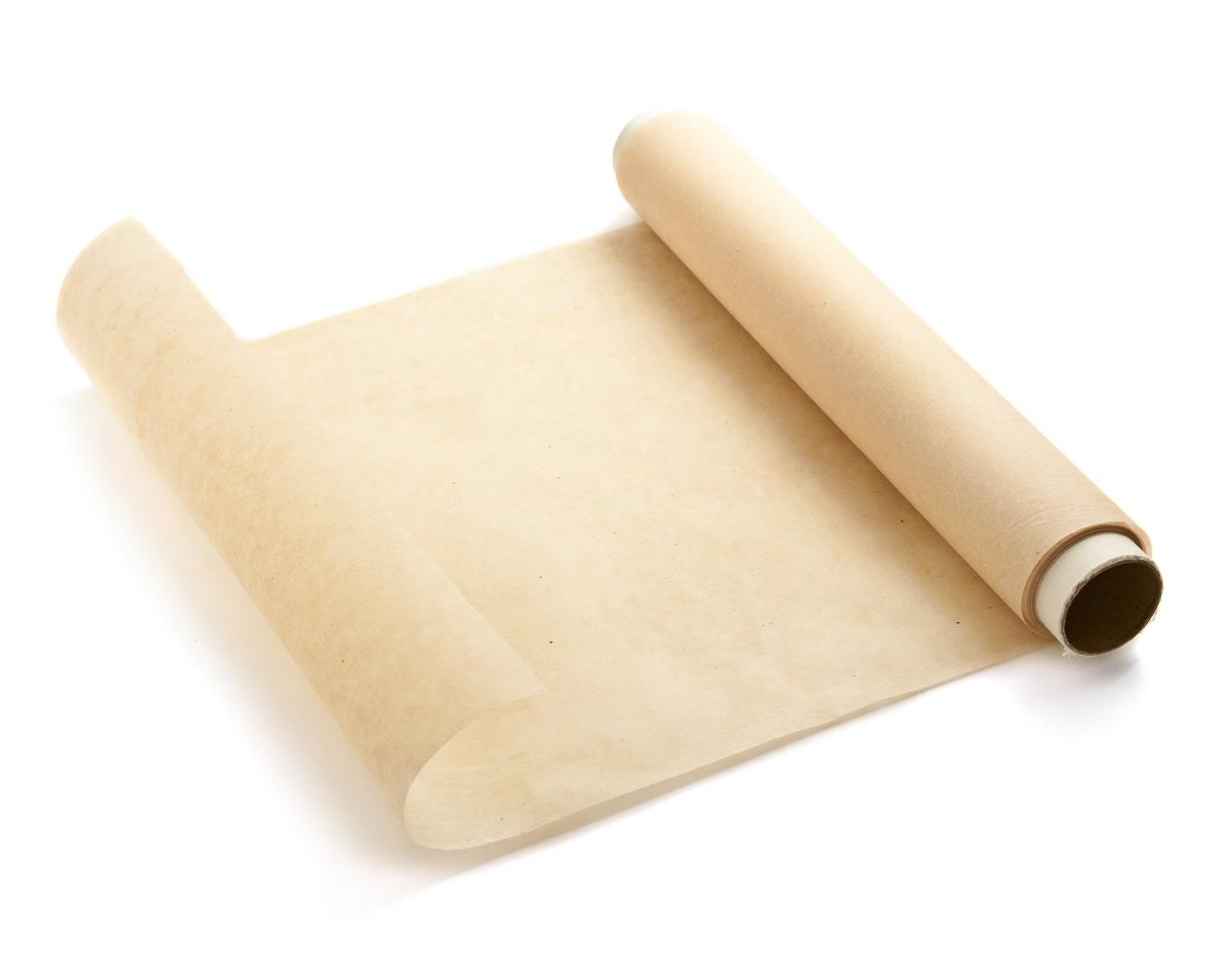
Let the Cheese Breathe
Cheese will dry out and become unappetizing if stored improperly. The best way to store cheese isn't in plastic but wrapped in parchment paper, which allows blocks or slices to breathe while preserving consistency and flavor.
Related: 19 Ways to Make an Ordinary Grilled Cheese Extraordinary
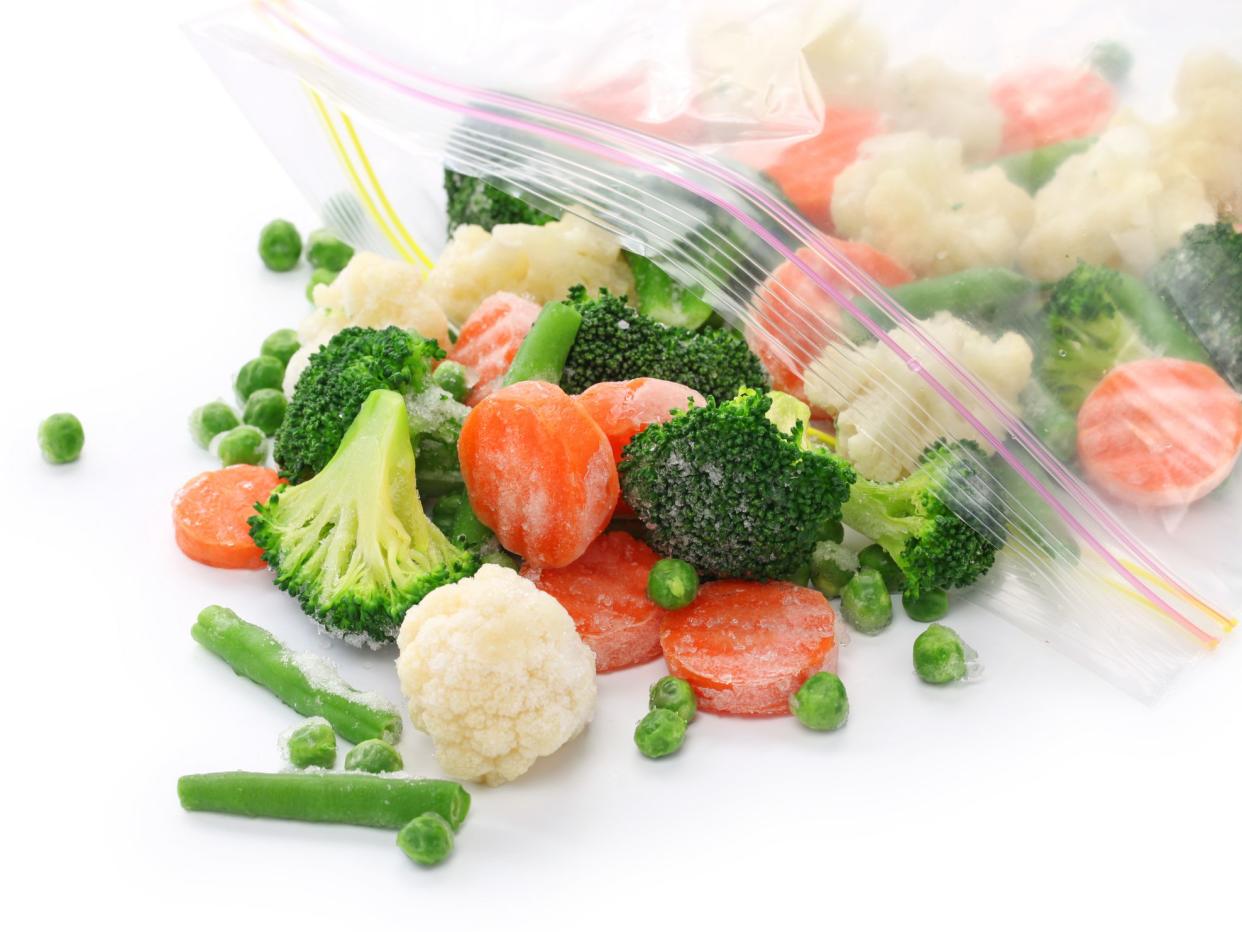
Reuse Food Storage Bags
Food storage bags are used for so many different things, and many times they can be rinsed, dried, and reused. Stick to bags that aren't heavily soiled and haven't contained fatty foods, since the residue is difficult to wash out, or raw meat.

Use Stackable Containers
Rather than accumulate a hodgepodge of different shapes of storage containers, look for containers that fit together. Being able to stack containers and/or nest the inside each other when empty will maximize the space and help keep everything feeling and looking organized.
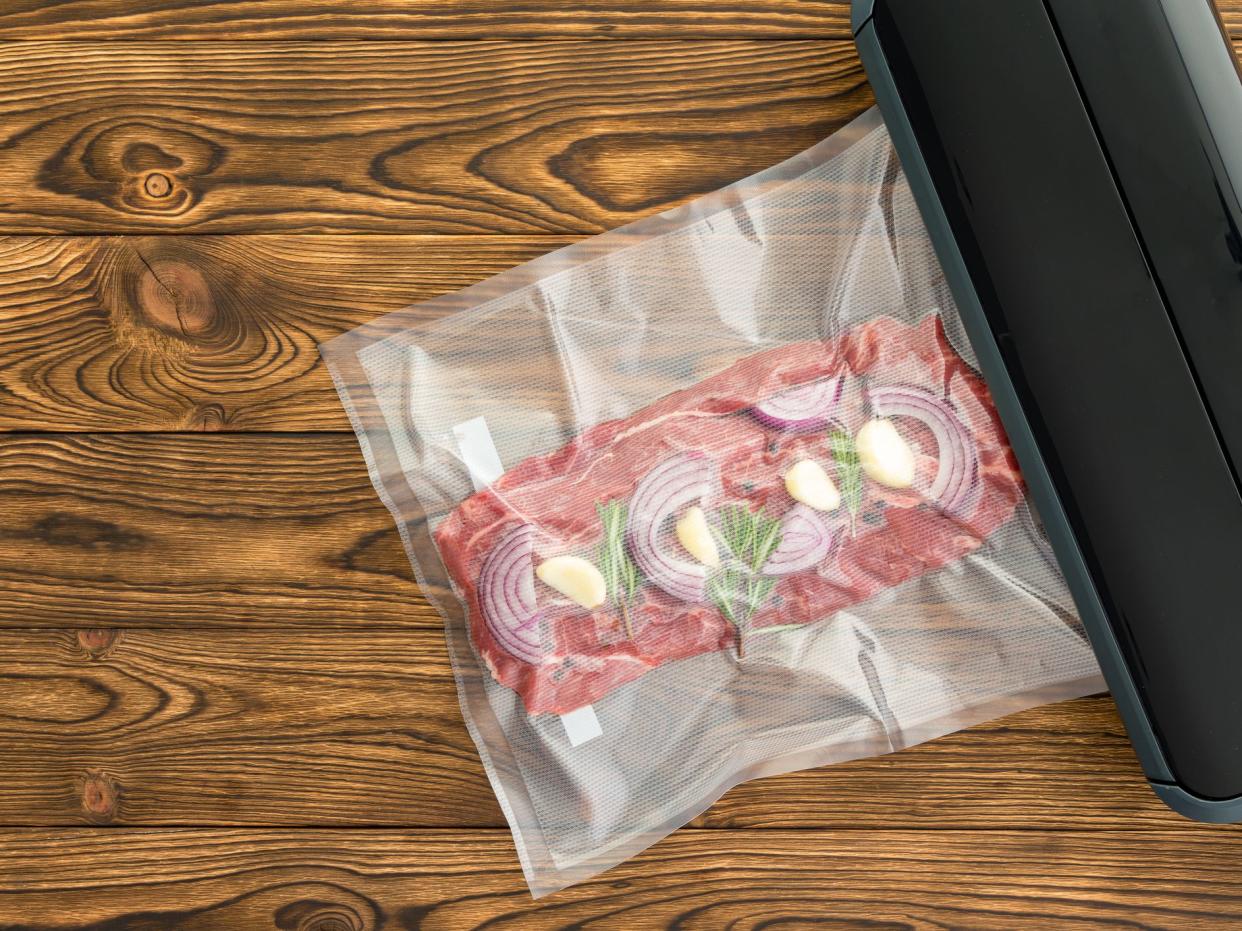
Use a Vacuum Sealer
A vacuum sealer (from about $30 on Amazon) is a one-time investment that can pay for itself time and again in the long run. If you routinely buy large cuts of meat, whole animals, or other bulk proteins, a vacuum sealer helps store individual portions safely for a long time.
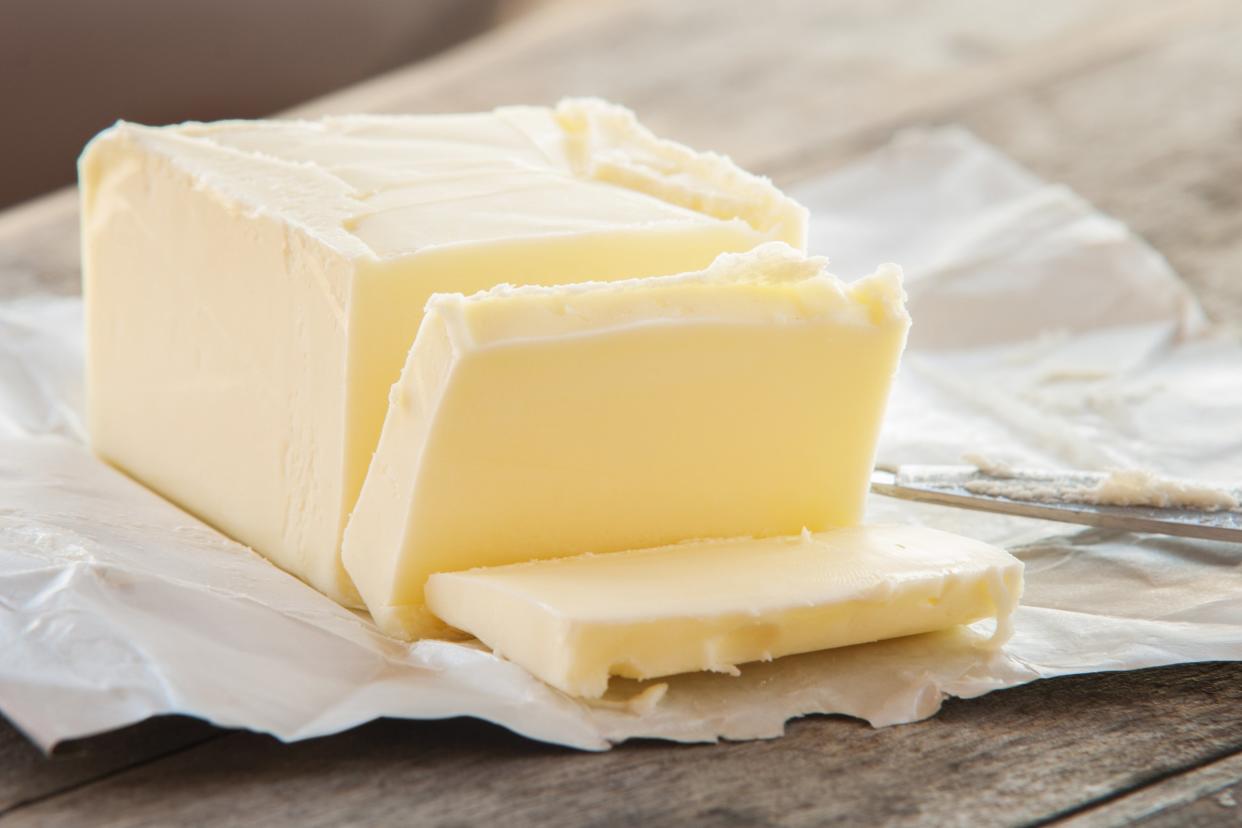
Freeze Butter
Save money by buying several packages of butter when on sale and storing extras in the freezer. Butter freezes well with no change to flavor or texture if used within a few months.
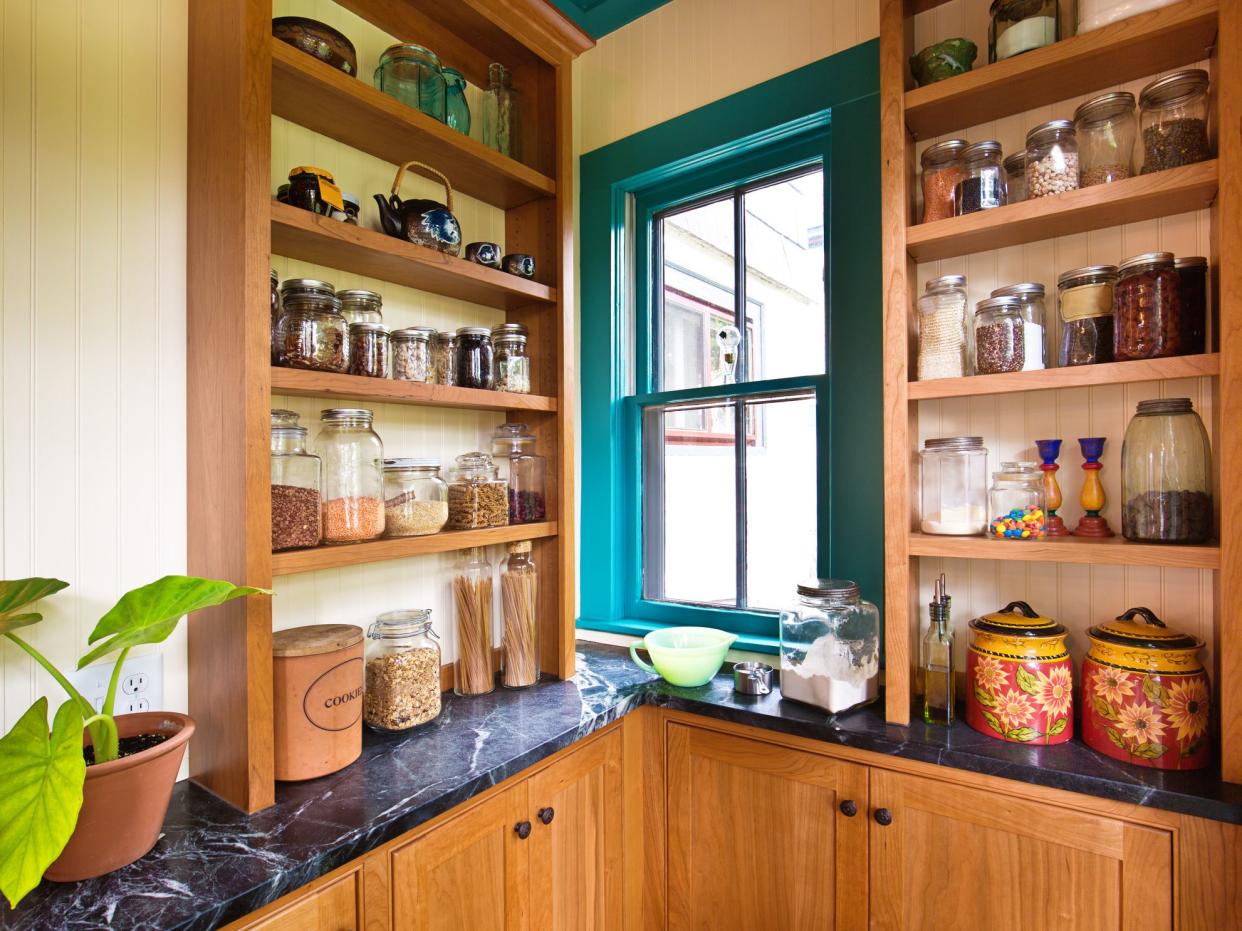
Find Unused Storage Space
Boost savings by maximizing overall space used for food storage. Install shelves on empty walls to create more space to stack and store staples. If the shelves are exposed, store food in attractive containers that complement the decor.
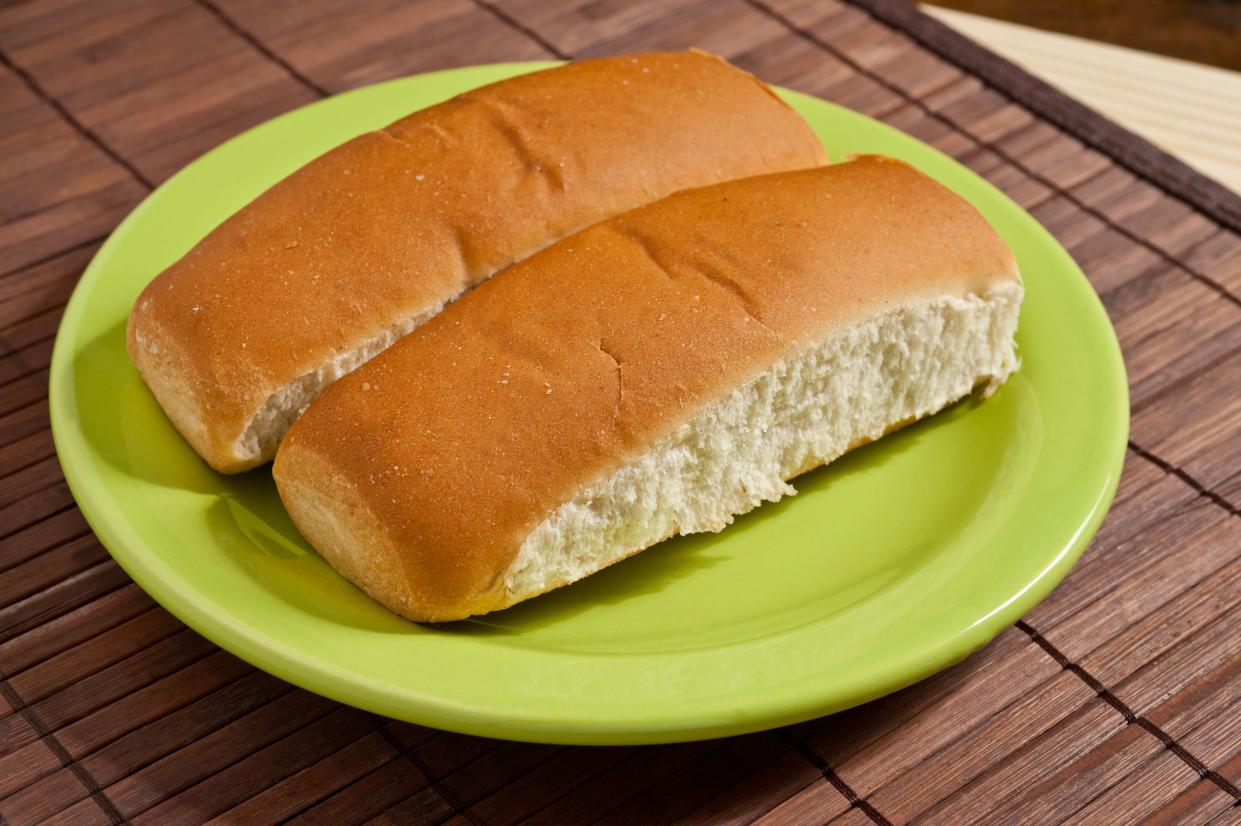
Freeze Hot Dogs and Buns
Store unused hot dogs and buns individually in the freezer for later, when the mood strikes. Both keep for months frozen, compared with just days in the refrigerator or pantry.
Related: We Tried 10 Hot Dogs and These Are the Tastiest
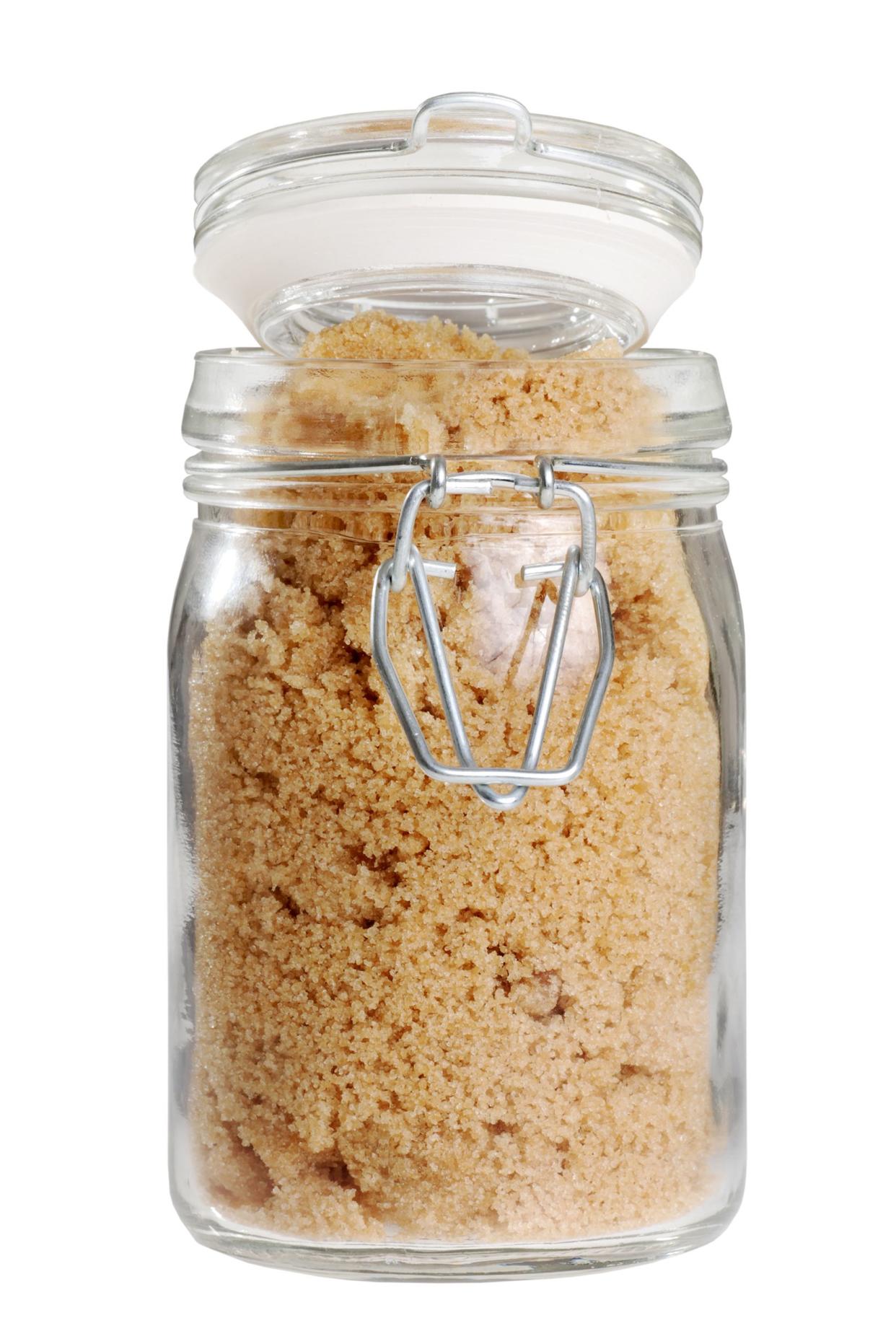
Store Brown Sugar With a Marshmallow
When brown sugar dries out, it turns hard and unusable and may wind up in the garbage. To maintain moisture, store bagged brown sugar with a marshmallow or two and place in a sealed container.

Keep Leftover Wine in a Mini Bottle
Wine goes bad when exposed to oxygen, but storing leftover wine in smaller bottles or jars with less air space can help keep oxygen from destroying the flavor and structure of the wine. While not as aesthetically pleasing, storing leftover wine in a mason jar will keep it fresh for days longer.
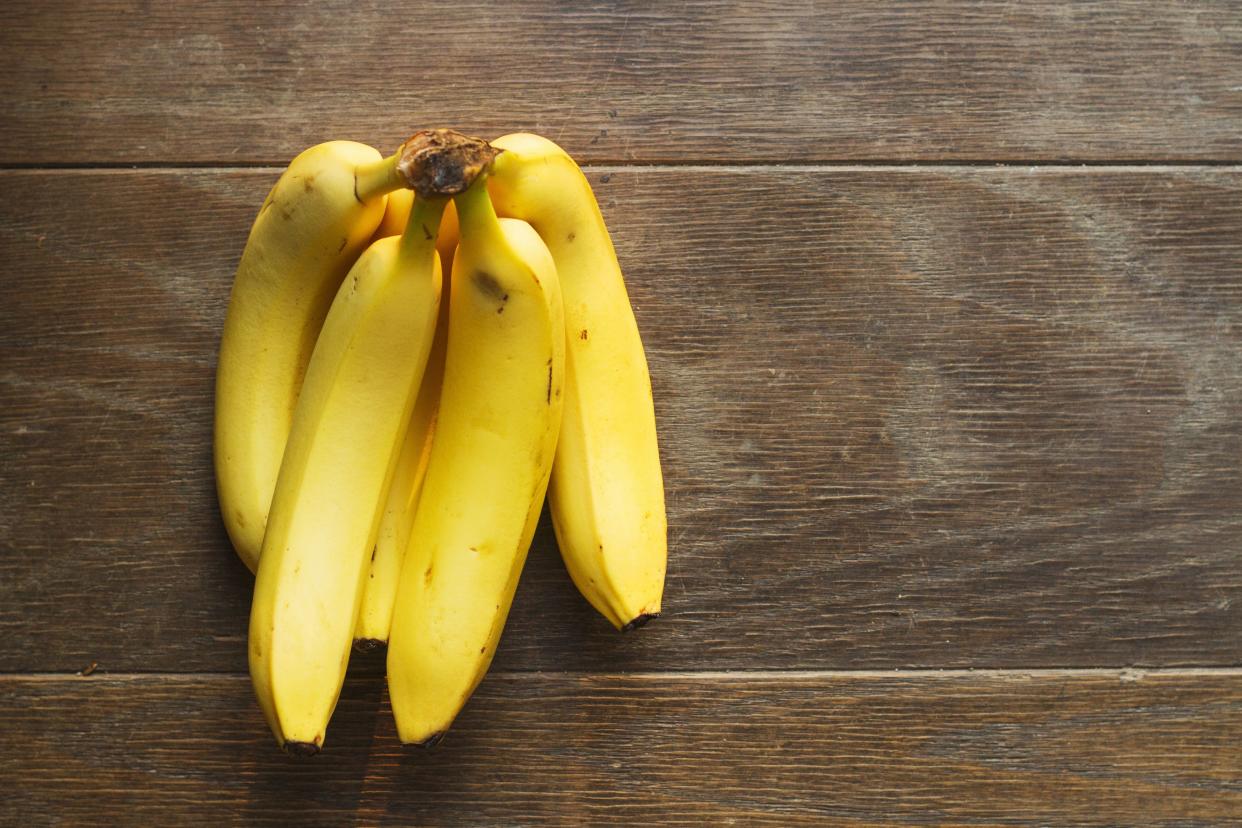
Wrap Banana Stems in Plastic Wrap
Bananas tend to ripen fast and all at once. To slow the process, wrap the banana stem in plastic wrap. To slow it down even more, break the bananas apart and wrap each individual stem. This keeps the gas the stems give off from ripening the fruit too fast.
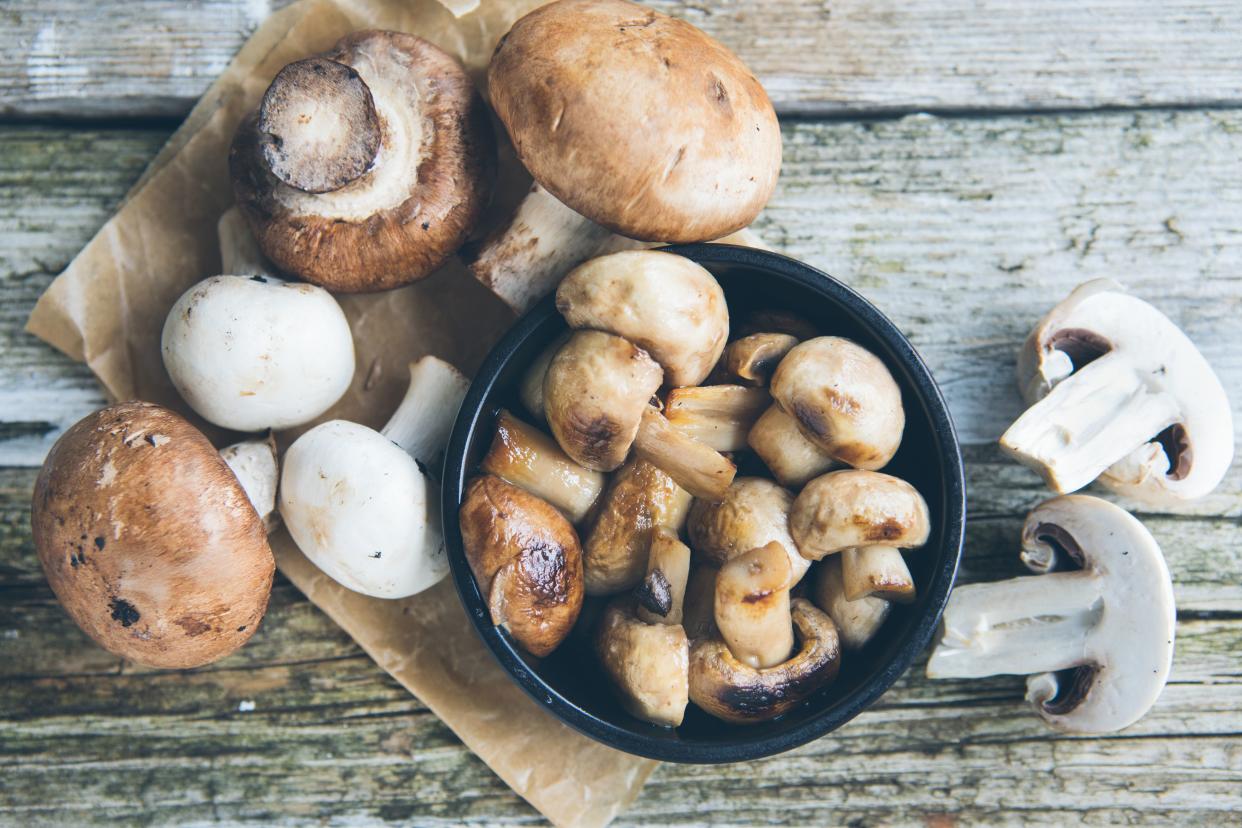
Store Mushrooms in Paper Bags
The best way to keep mushrooms firm and dry is in a paper bag in the fridge, a method that provides the proper balance of humidity and moisture and allows air to circulate. Stored in this way, mushrooms can last up to 10 days without getting soggy, funky, or spoiled.
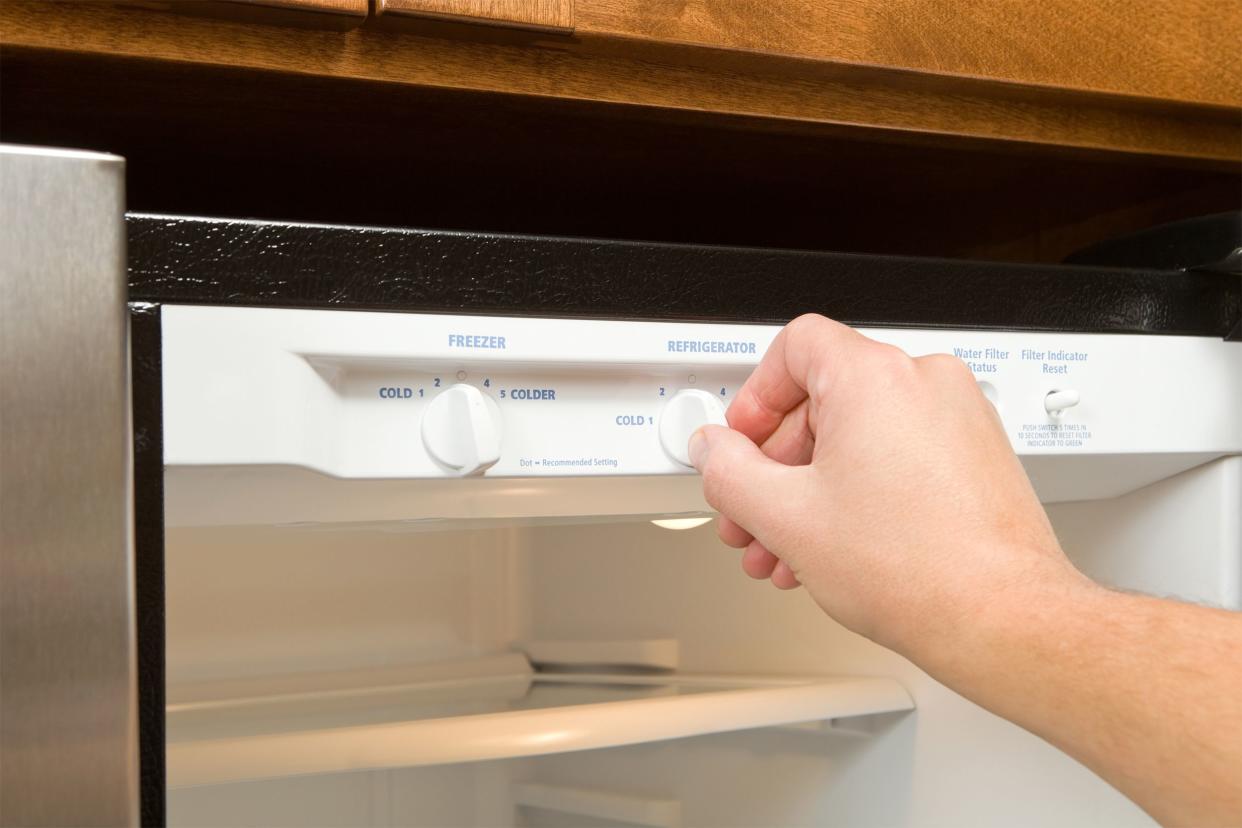
Set the Refrigerator at an Optimal Temperature
If the fridge is too cold, it may actually freeze food, especially items in drawers or in the rear of the unit. Conversely, if it's too warm, other items will spoil faster. The ideal temperature is 35 to 38 degrees Fahrenheit, cold enough to keep foods fresh without freezing.
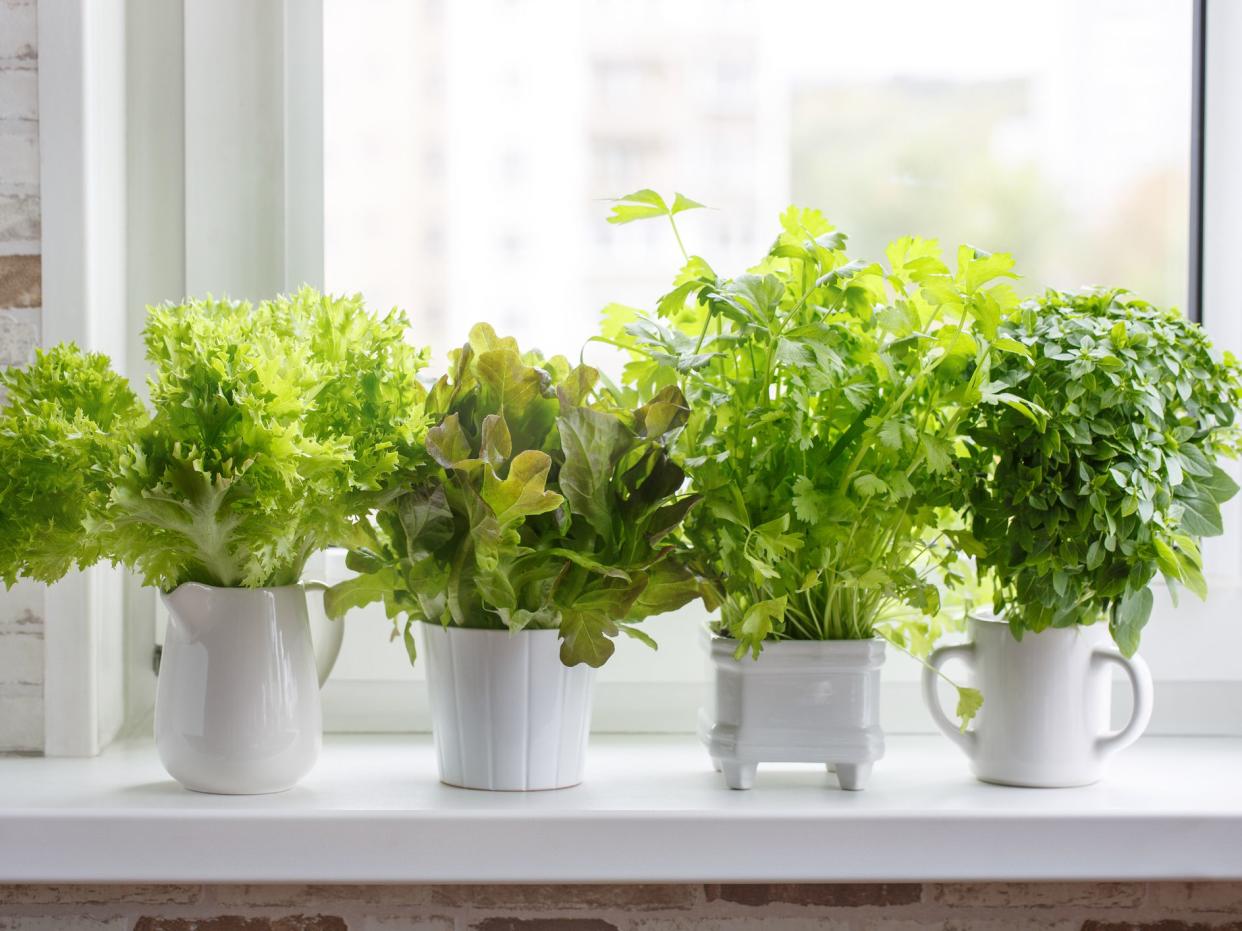
Treat Herbs Like Fresh Flowers
The best way to store fresh herbs is in a tall glass or vase with water in the bottom for the roots to soak up. Place a plastic bag over the top, unsealed, and store in the fridge. Treating them like fresh flowers with new water each day will keep them healthy and vibrant for up to 10 days.
Related: Edibles Anywhere: 15 Foods to Grow in a Container Garden
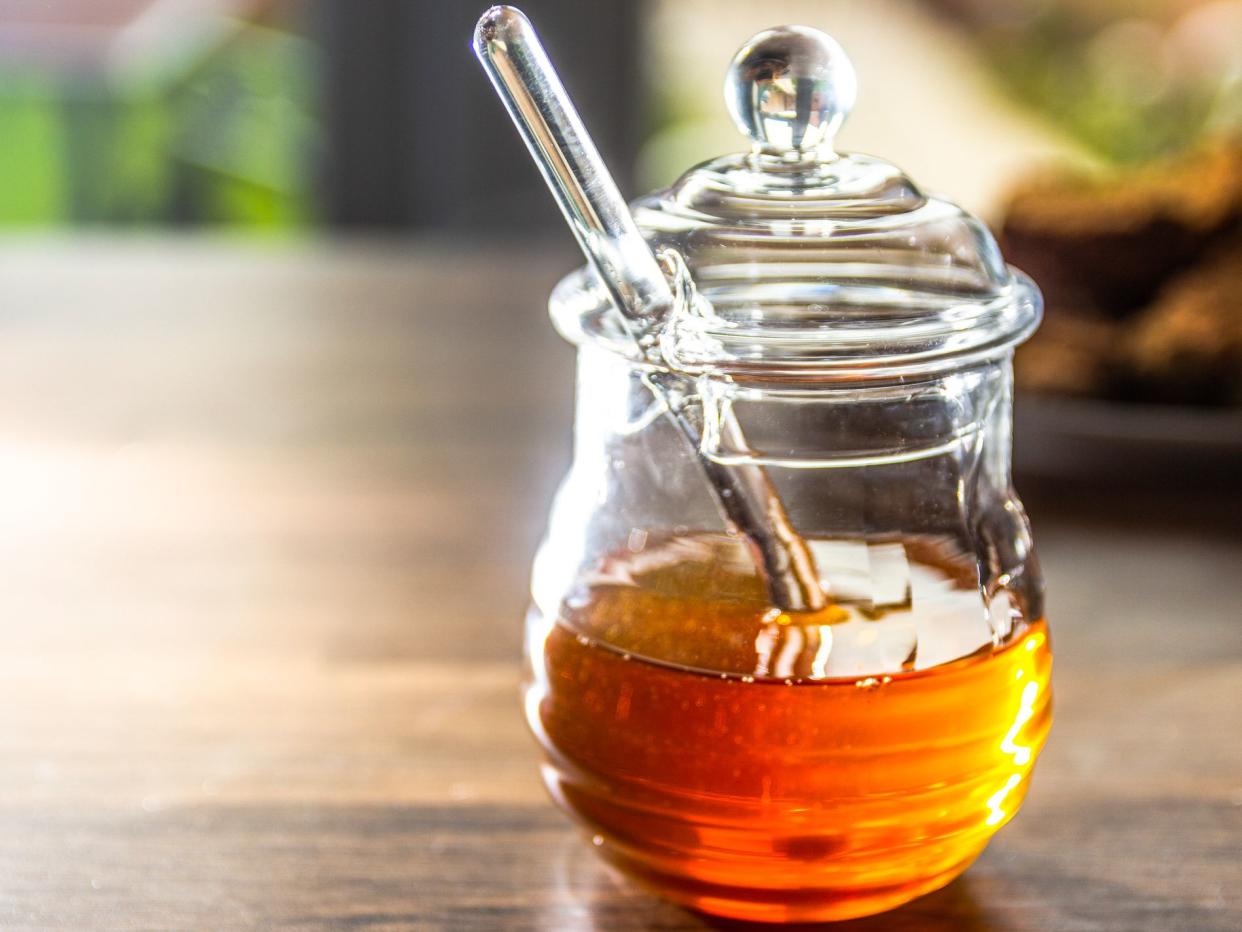
Heat Honey to Get Rid of Crystals
Crystallized honey is safe to use, but it can be hard and unsightly and may wind up in the garbage. To avoid crystals, store honey in a cupboard, not the fridge. To get rid of crystals, warm the jar of honey in a pan of warm water.
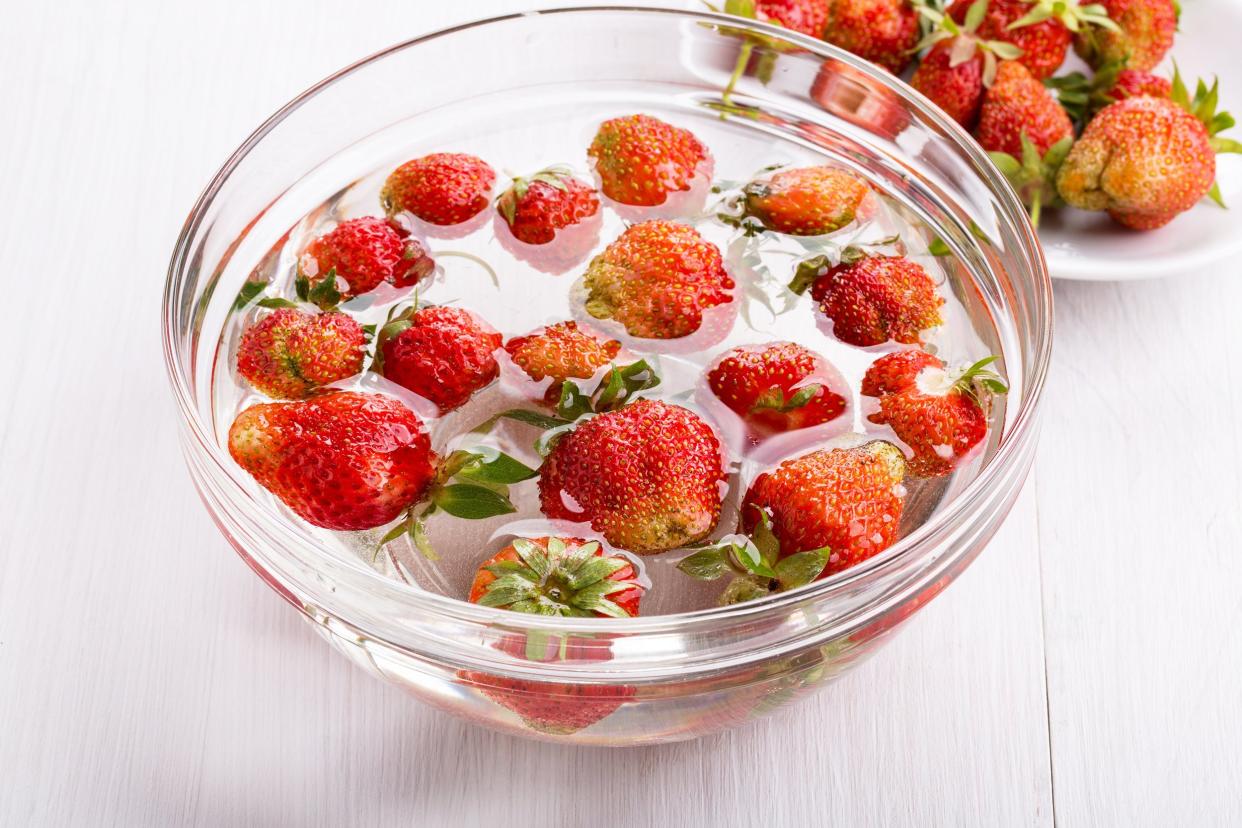
Wash Berries in Water-Vinegar Mixture
Wash strawberries, blueberries, raspberries, and other berries in a 10-to-1 ratio of water and vinegar to help keep them plump and fresh for up to twice as long, while also ridding them of any pests that might be lurking in the package.
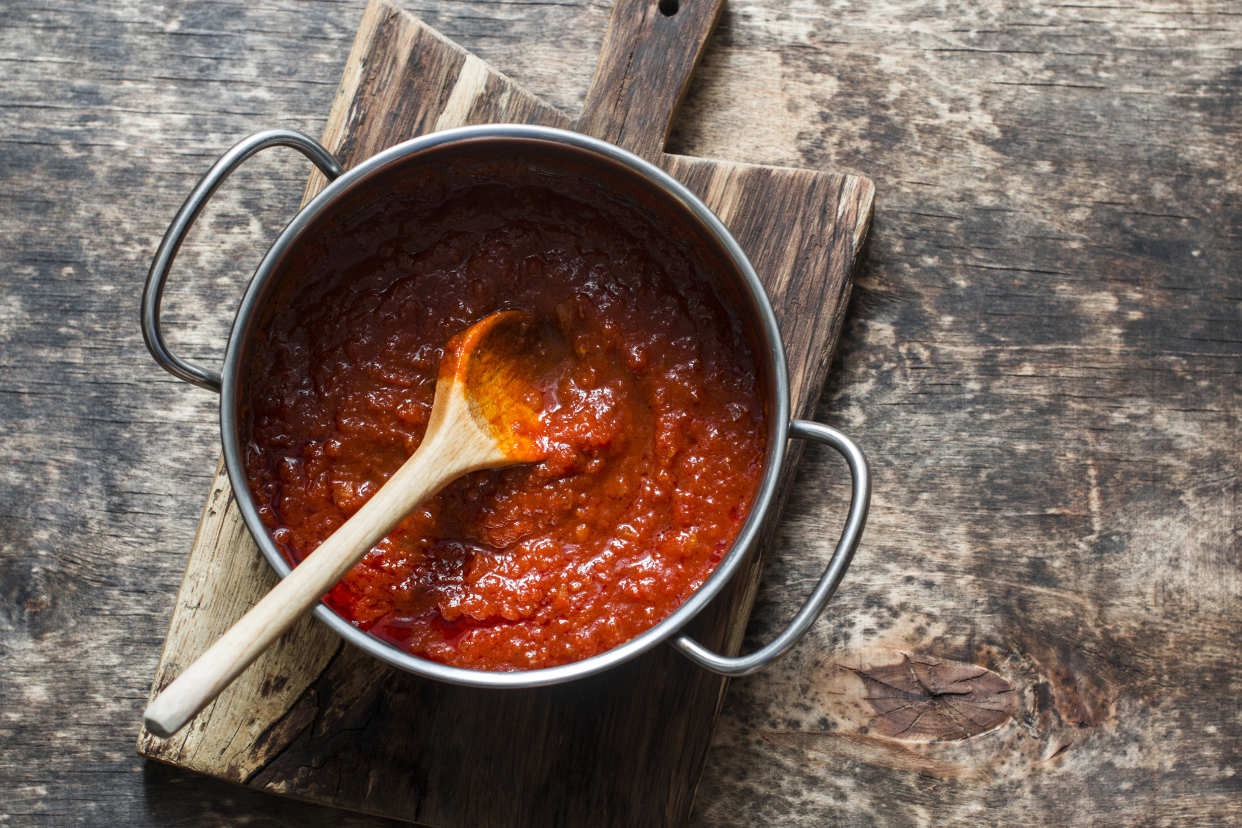
Freeze Leftover Canned or Jarred Sauces
Many recipe call for just a small amount of tomato paste or sauce, leaving a mostly full container that will only last a few days in the fridge. Rather than watch it spoil, place it in a flat layer in a freezer bag so you can break off pieces to use in future recipes without wasting any.
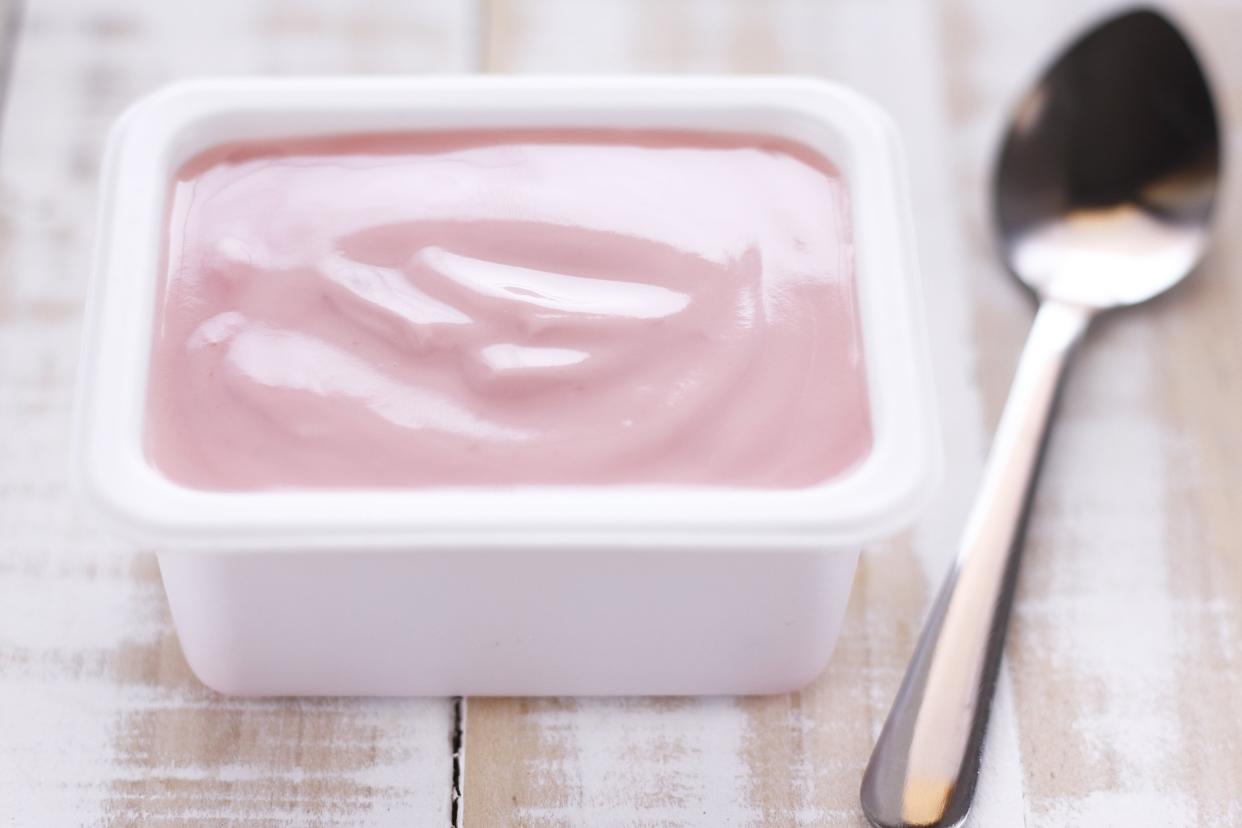
Store Dairy Upside Down
Dense dairy products such as yogurt, cottage cheese, and sour cream create a seal just under the lid when turned upside down. The seal will prevent oxygen from getting into the container and spoiling the contents and extend product life.
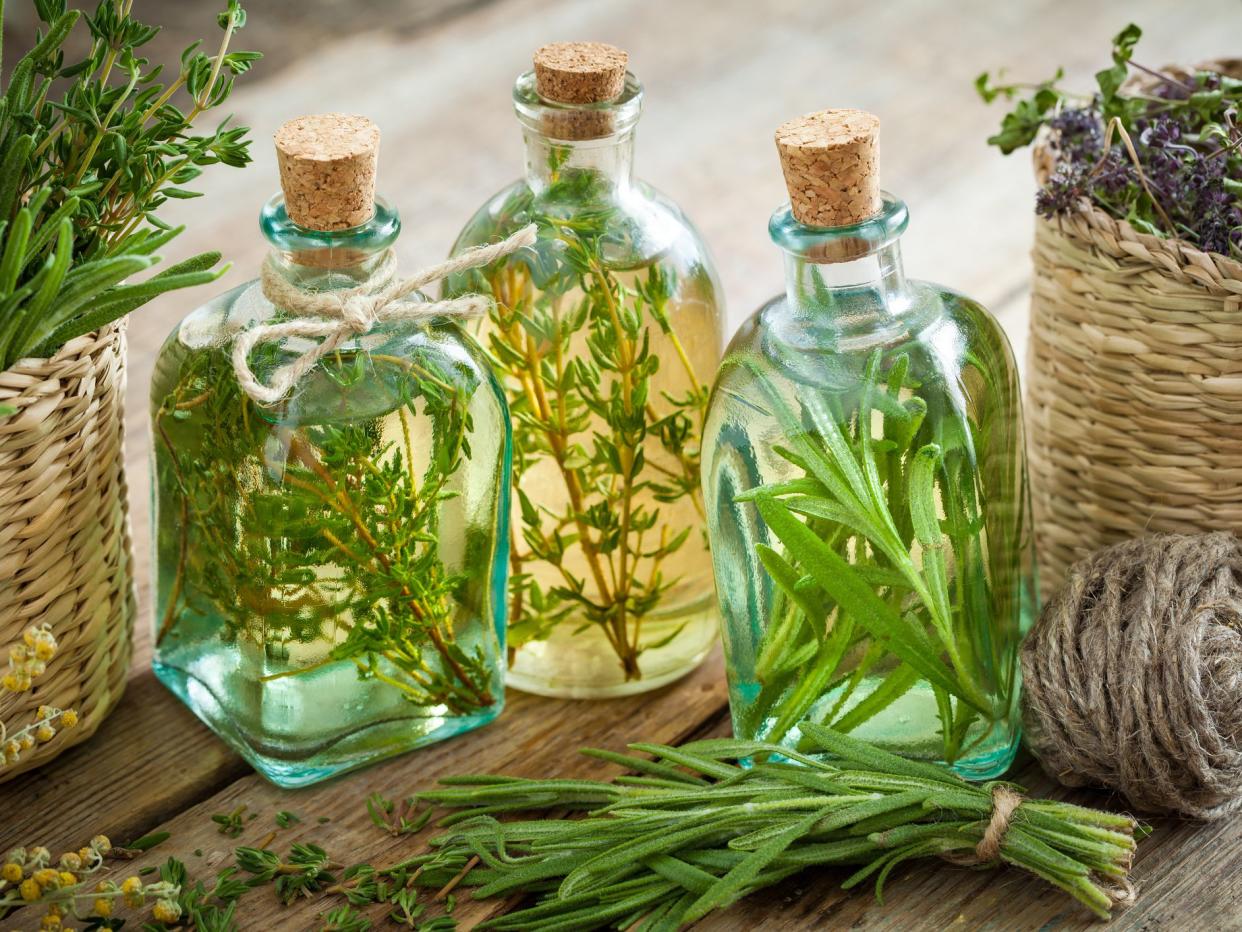
Infuse Oils With Leftover Herbs
Fresh herbs are one of the trickiest items to store properly, and even then their shelf life is short. Storing fresh herbs in oil infuses the oil, and extends the life and flavor of the herbs well beyond the few days they would otherwise stay fresh in the fridge or on the countertop.
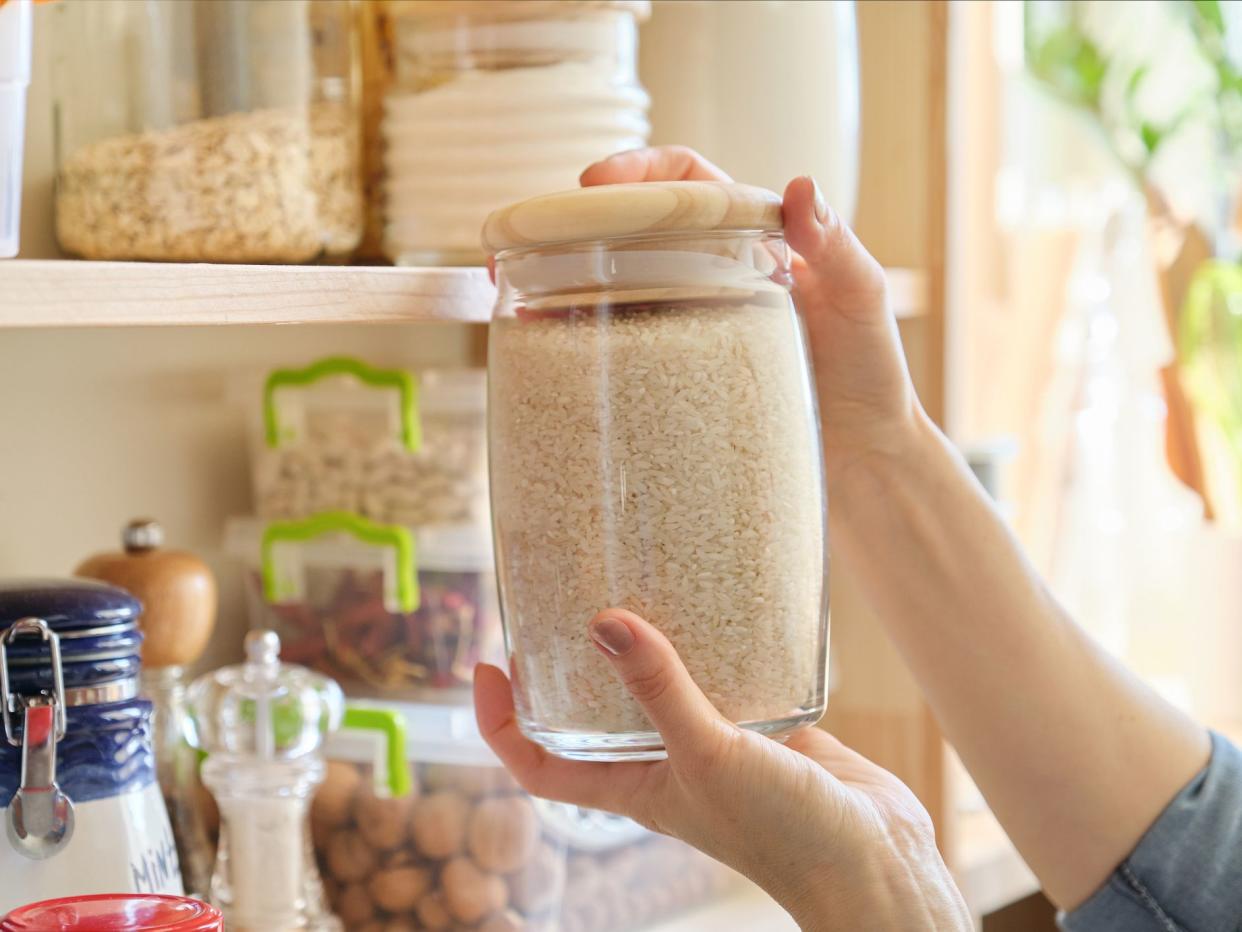
Divide Bulk Food Into Reasonable Portions
Buying bulk food can be a big money saver, although some of that savings can be squandered by improper storage. Divide bulk items into portions that maximize storage time without compromising freshness.
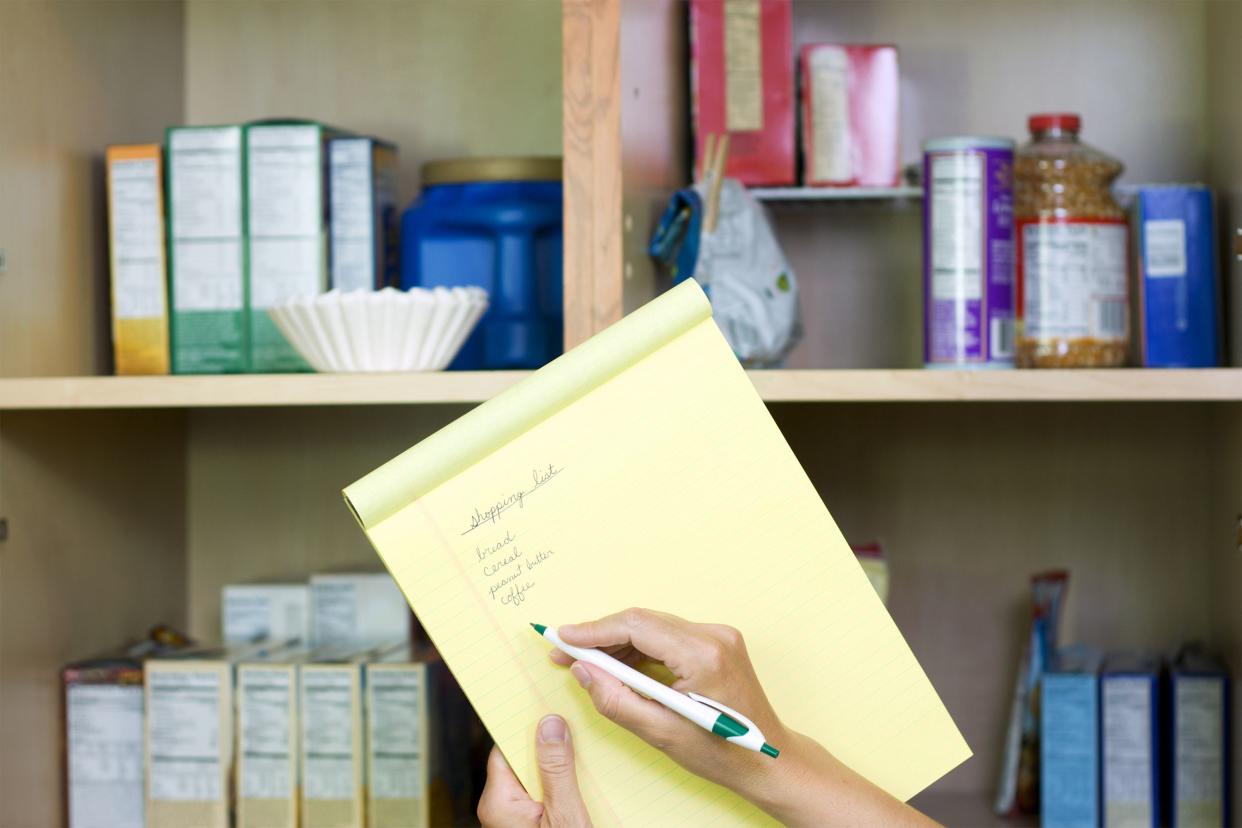
Maintain a List of Stored Food
If you have a fairly extensive supply of stored food, it's a good idea to keep a list of what's on hand. You can refer to it to see if you have something in stock, rather than waste time sifting through shelves of containers.

Don’t Freeze Wet Produce
Freezing wet produce can result in unusable food in some cases. Freezer burn can adhere to the fruits and veggies and cause unwanted flavors and a mushy texture, making the frozen food unappetizing.
Related: Get the Most Out of Old Bread and Other Stale Food With These Smart Hacks
This article was originally published on Cheapism







